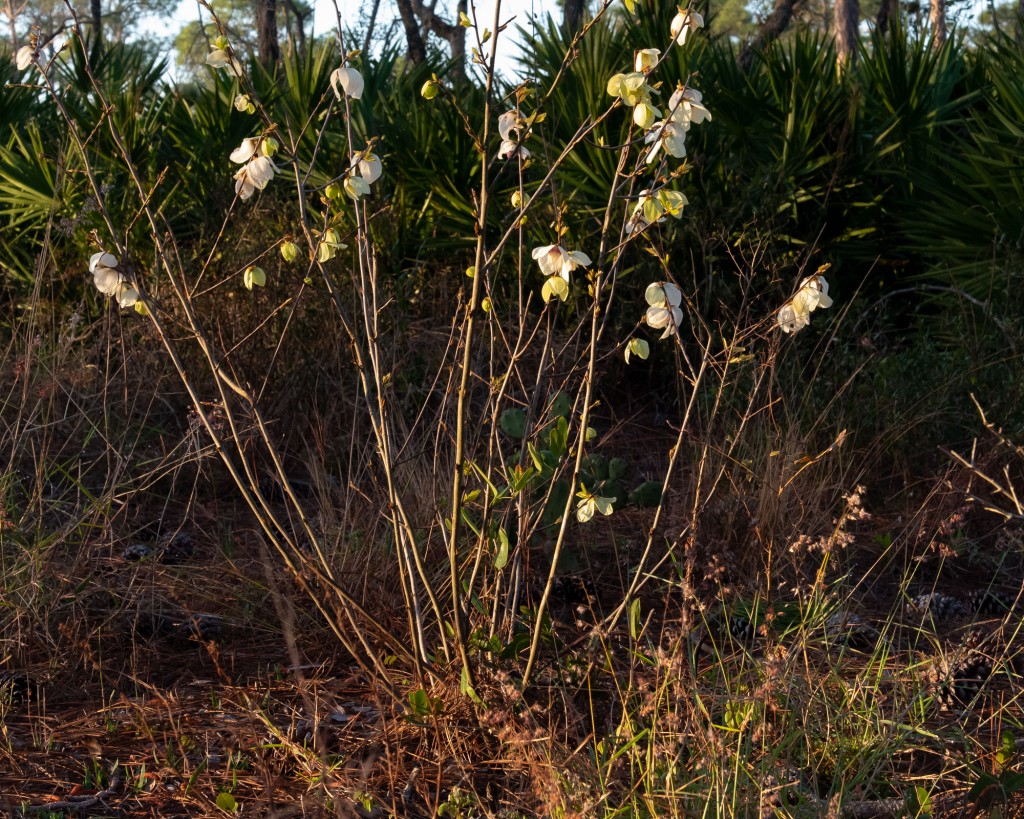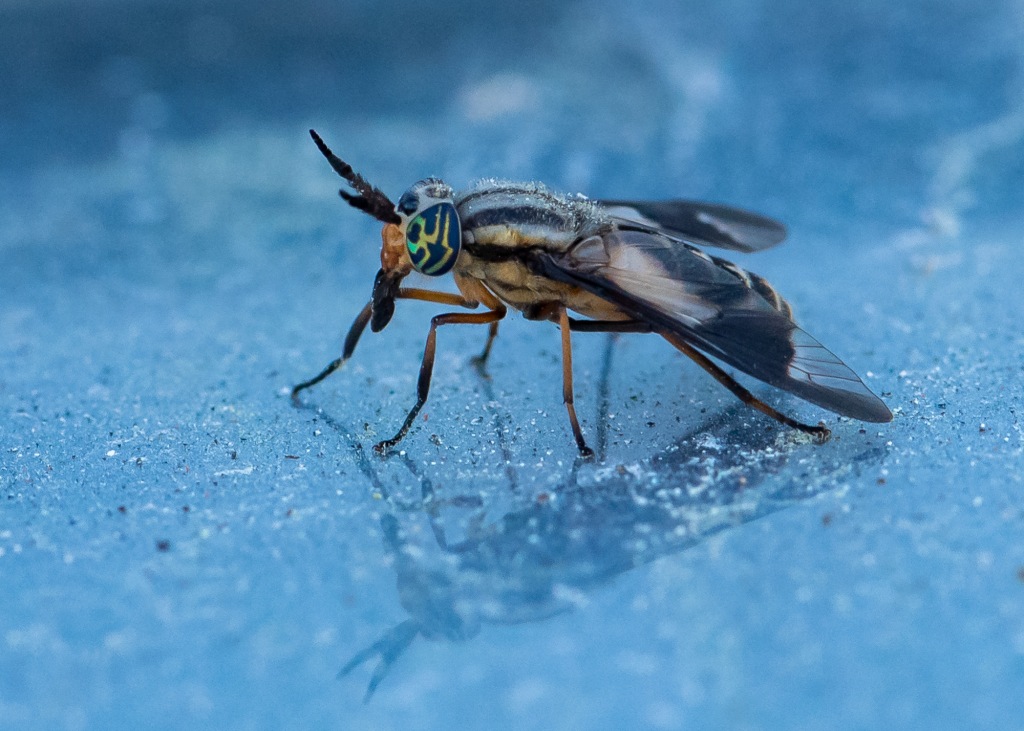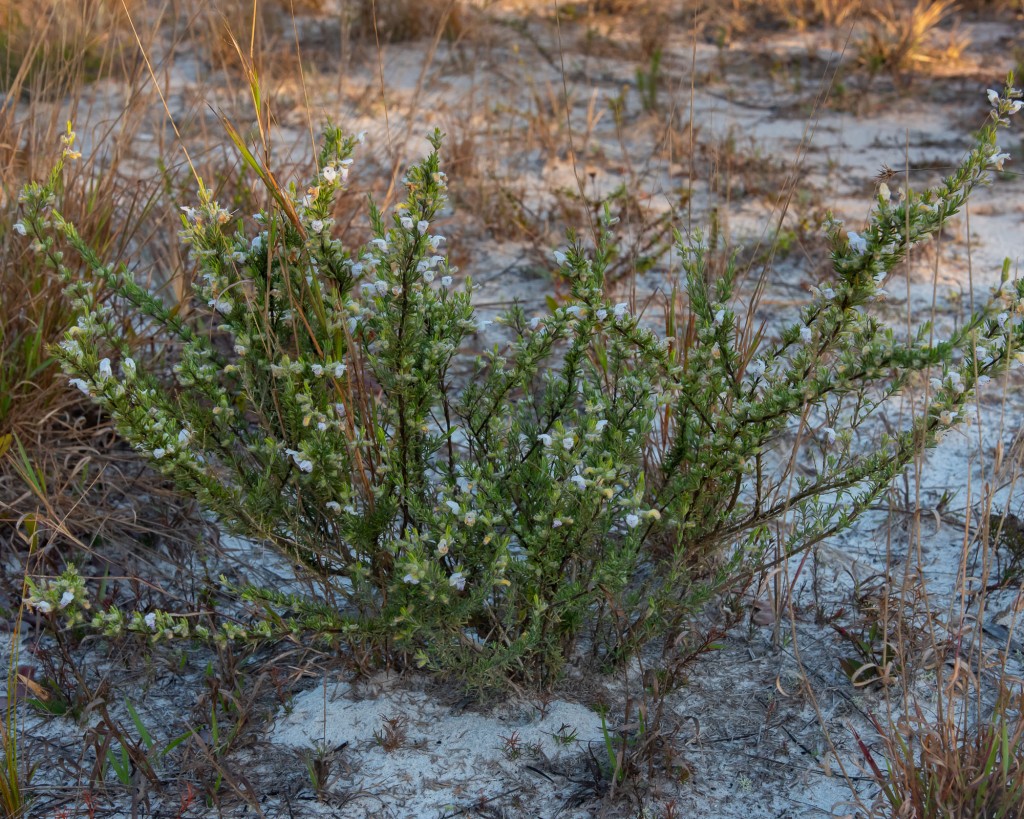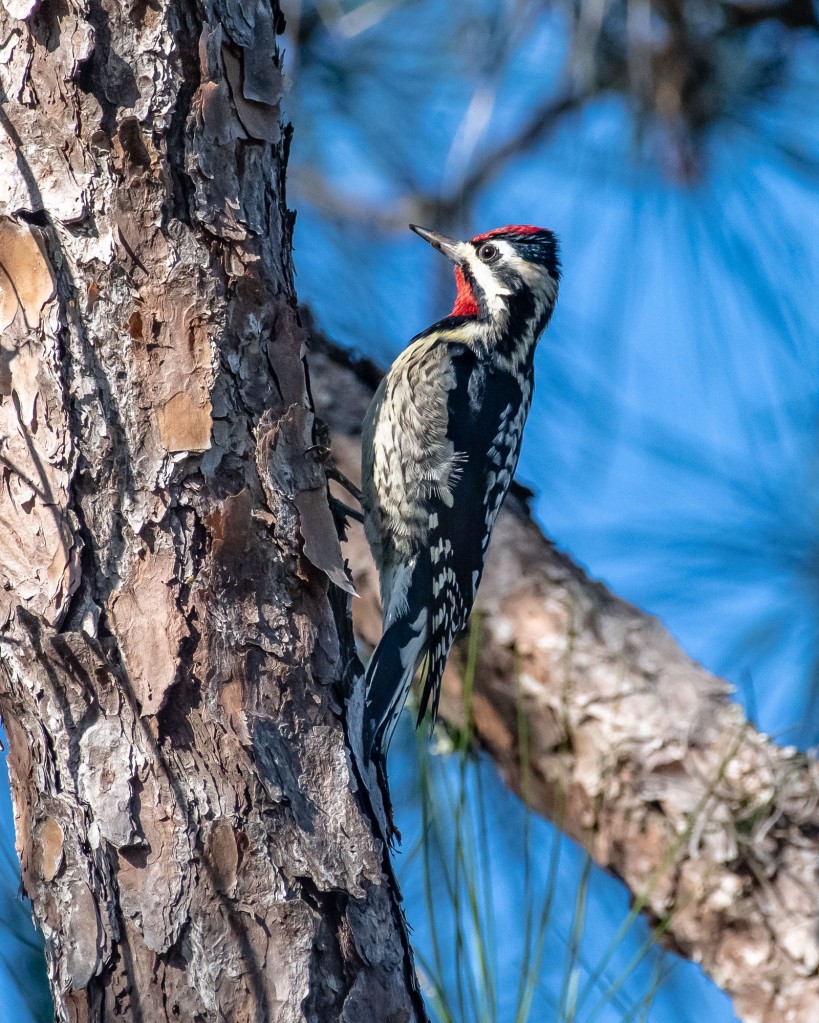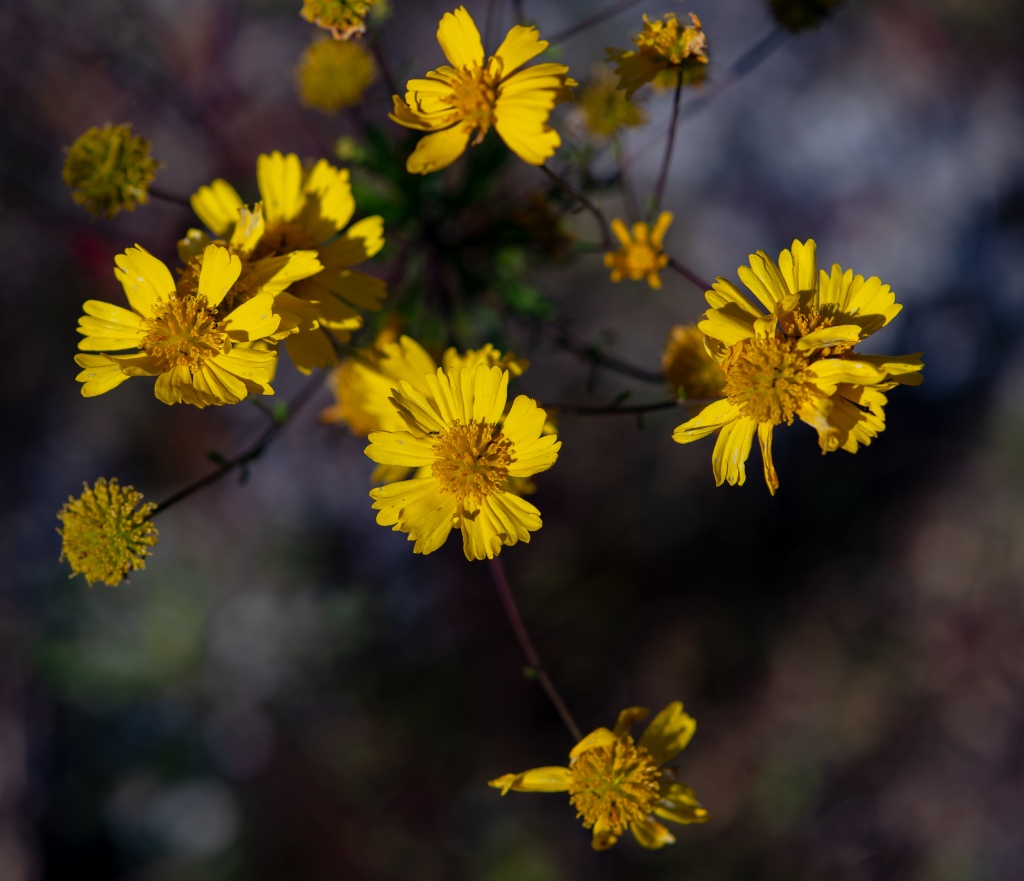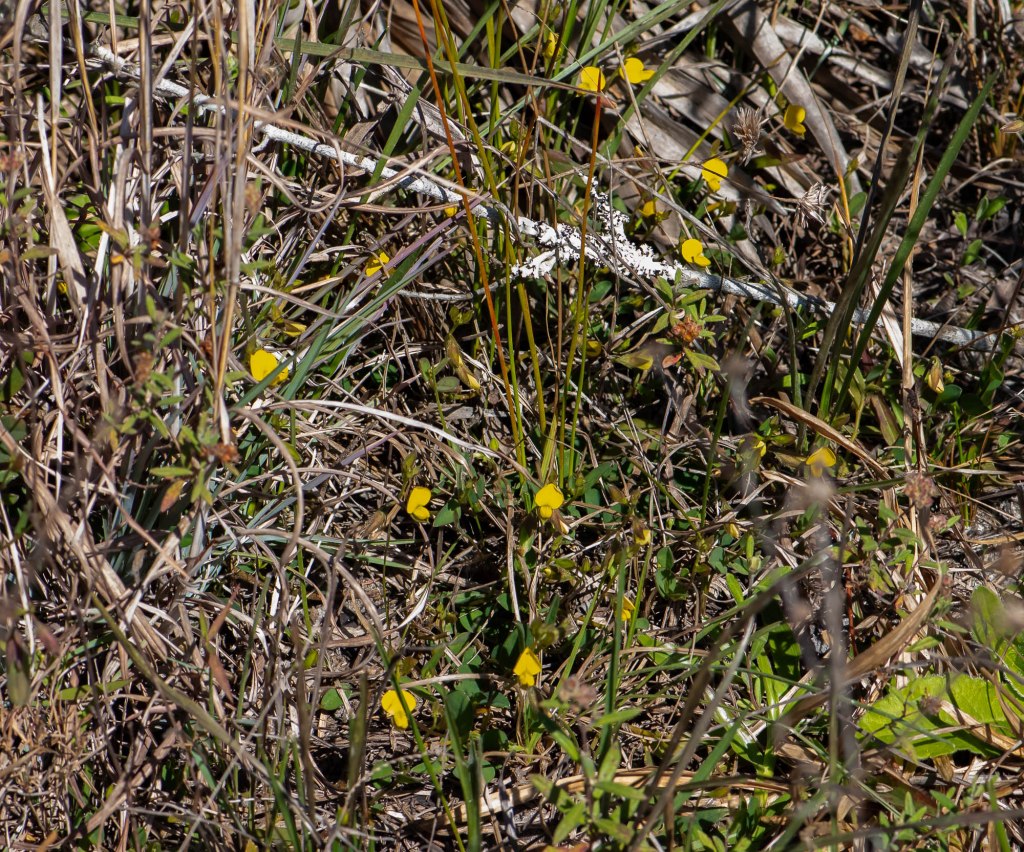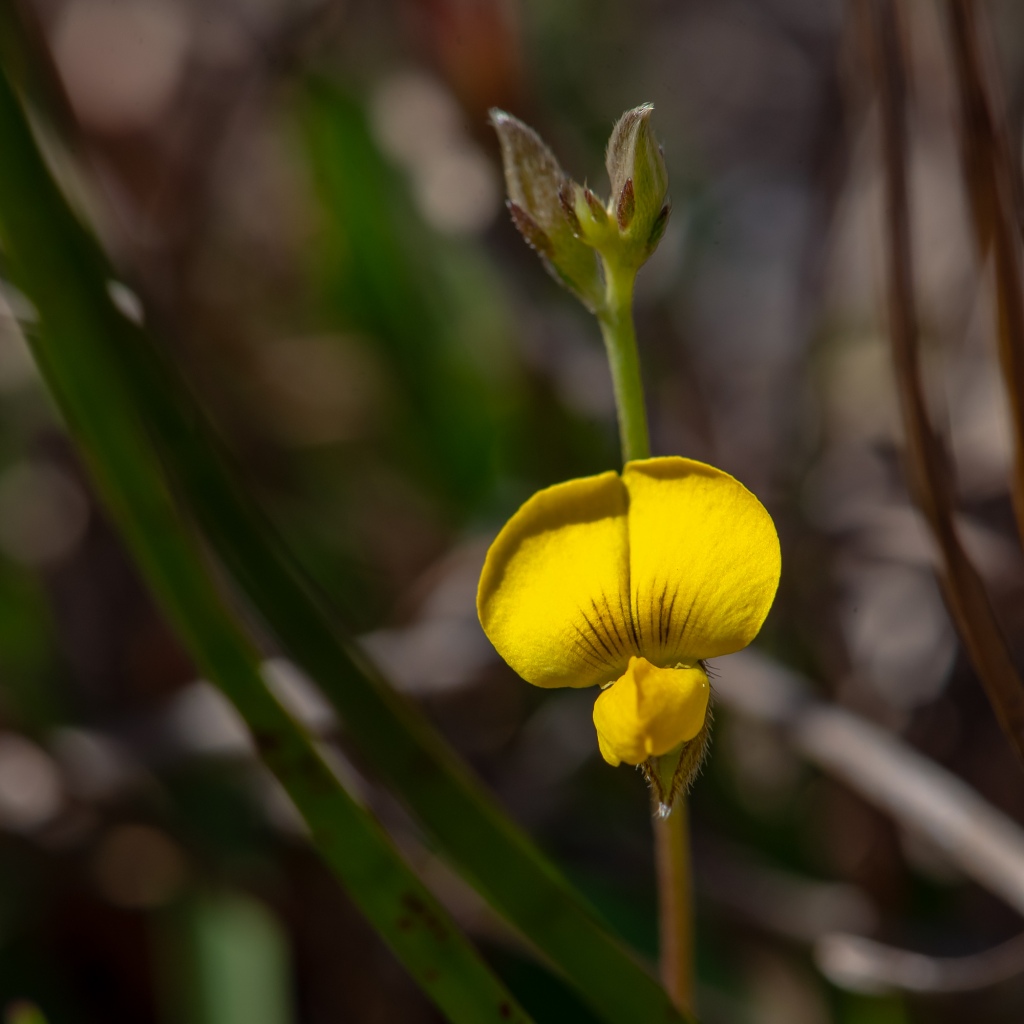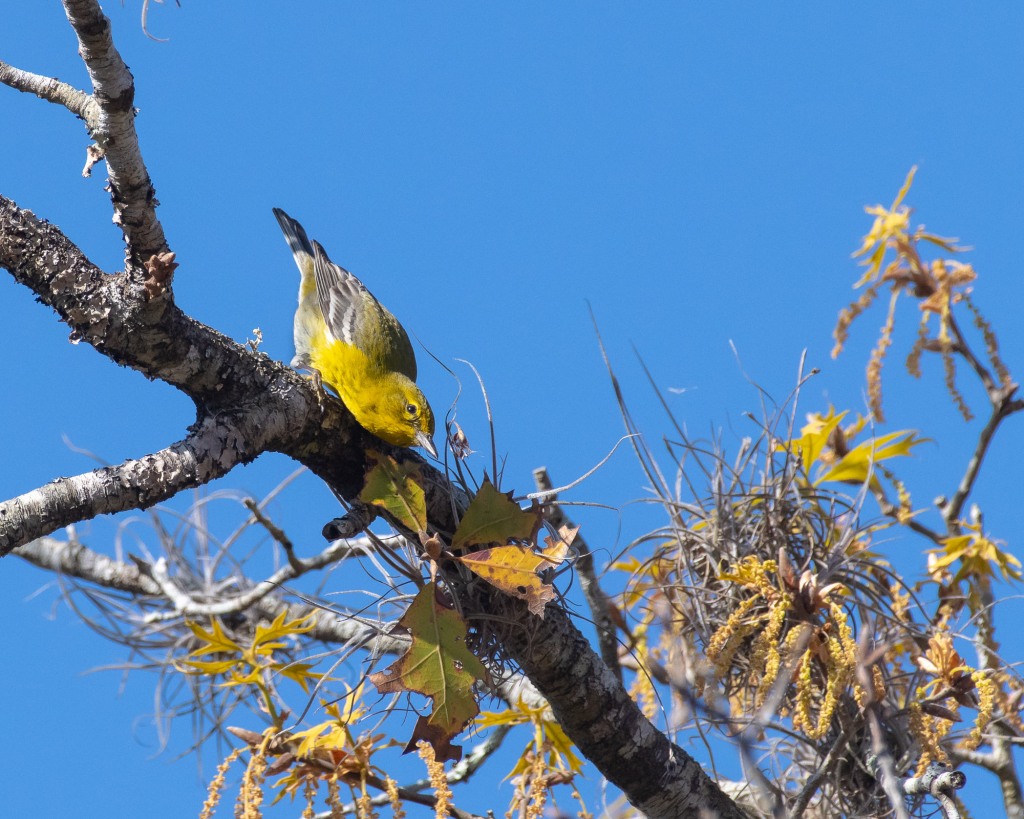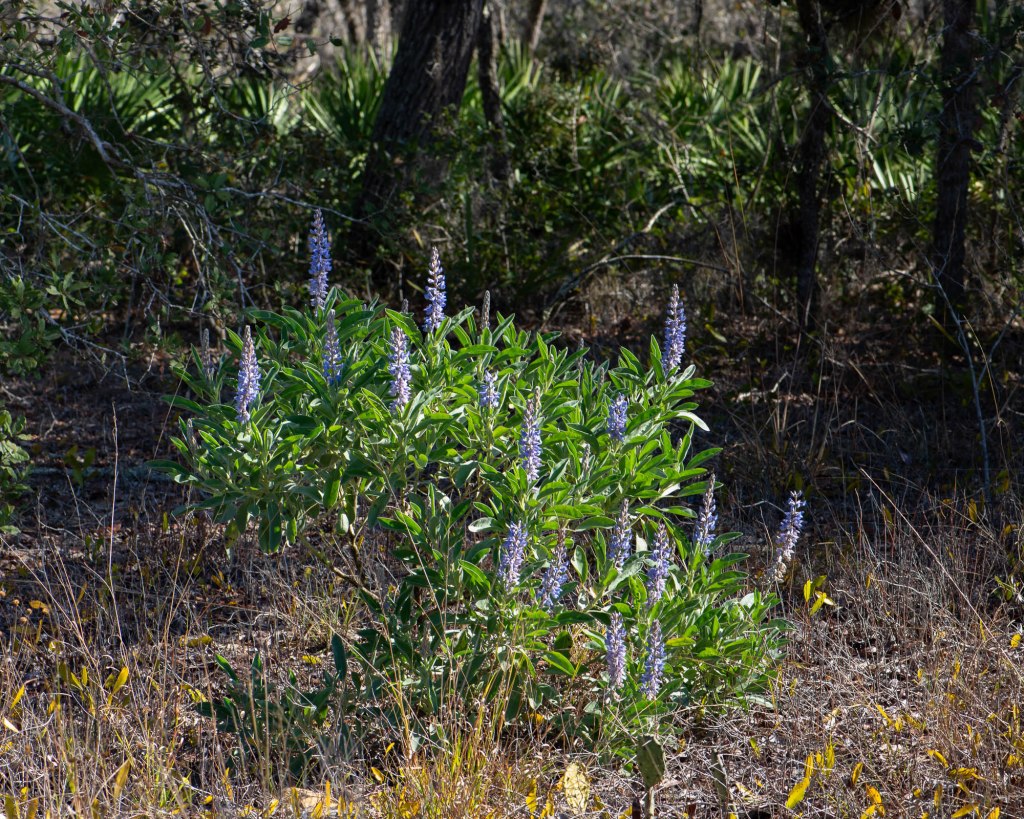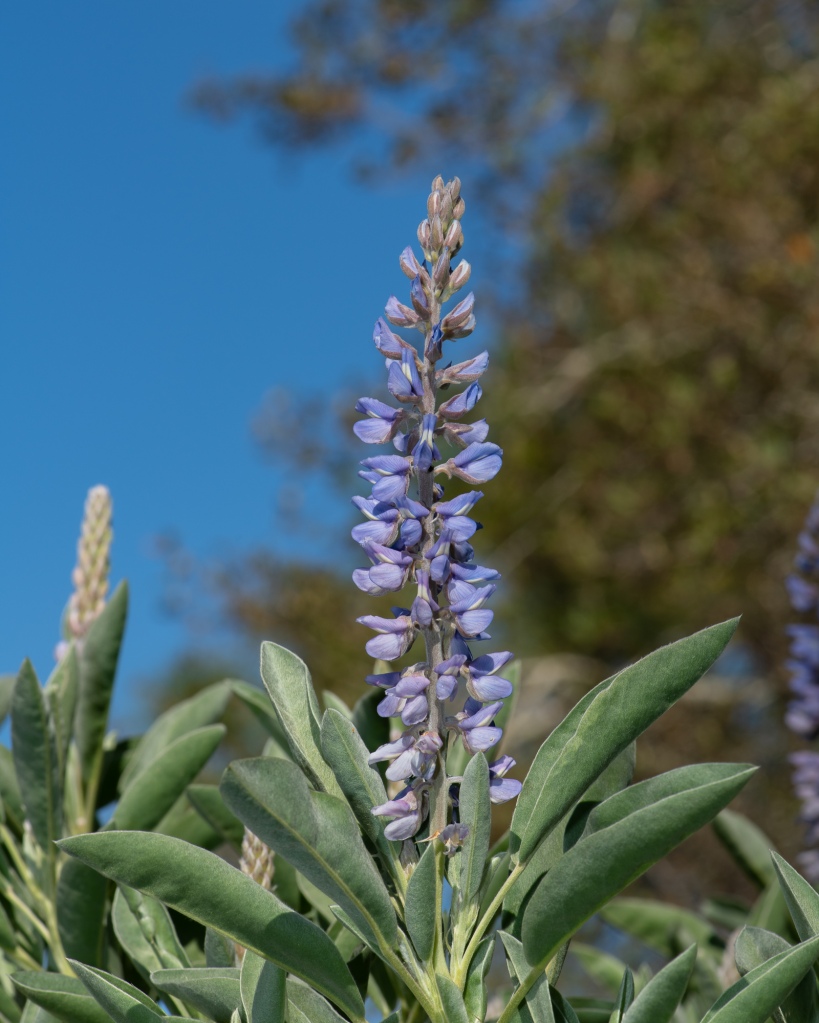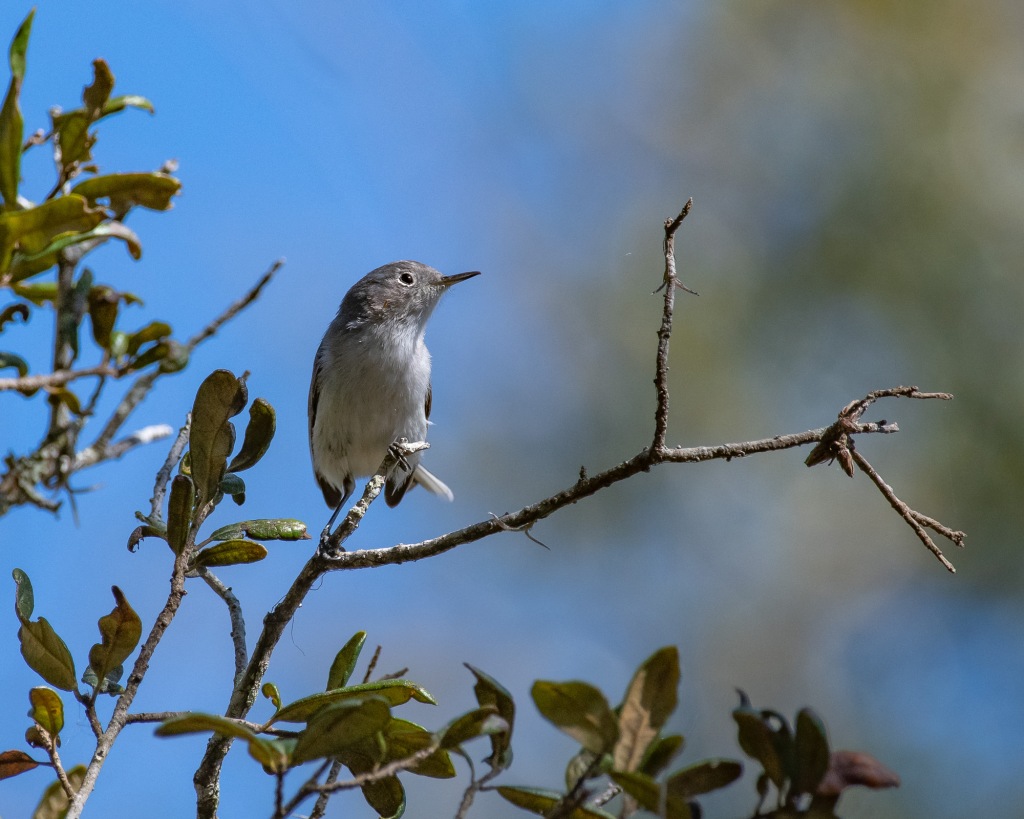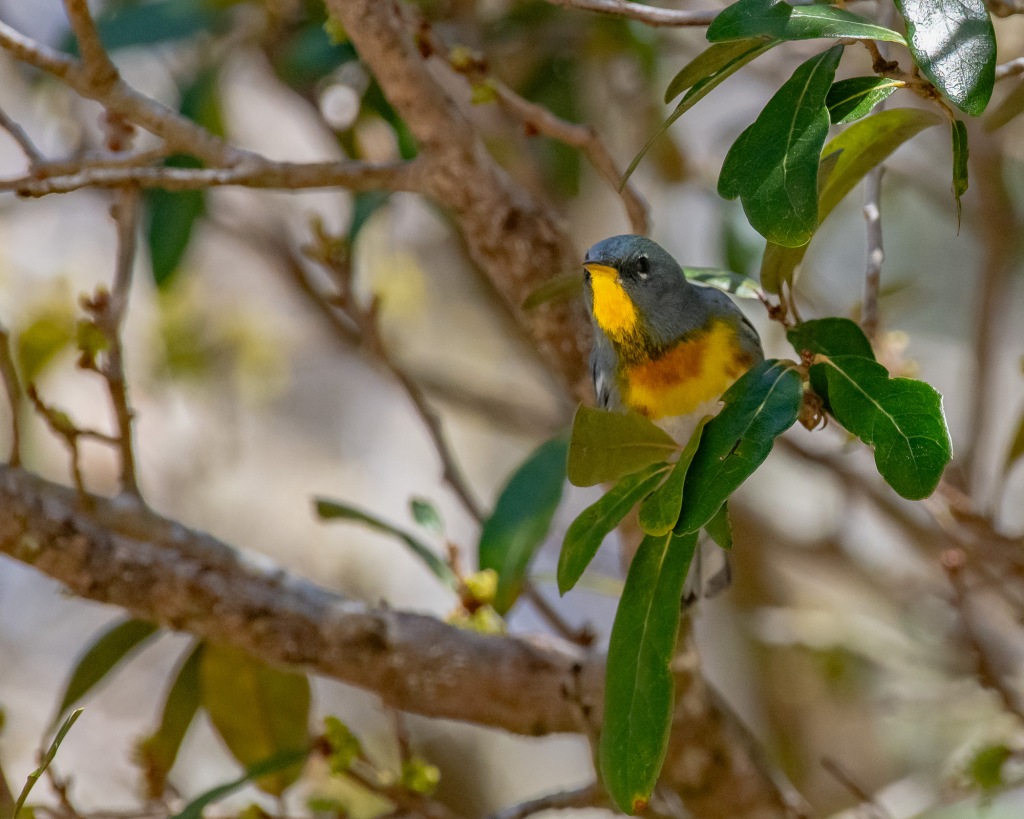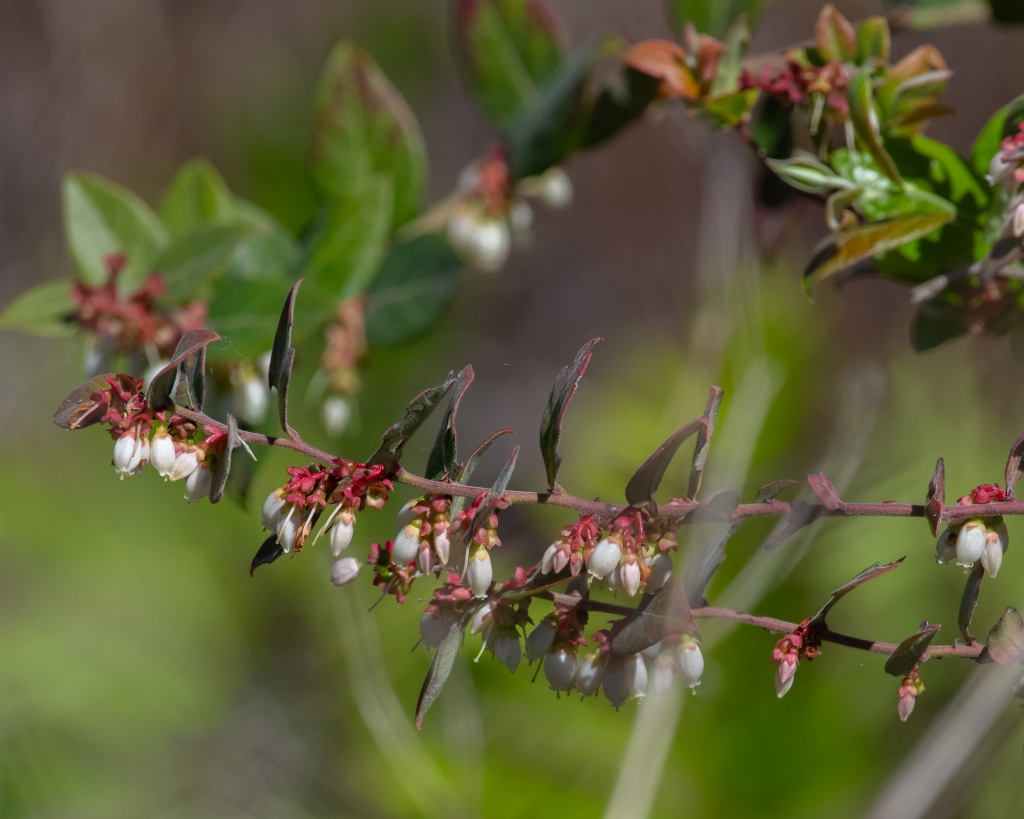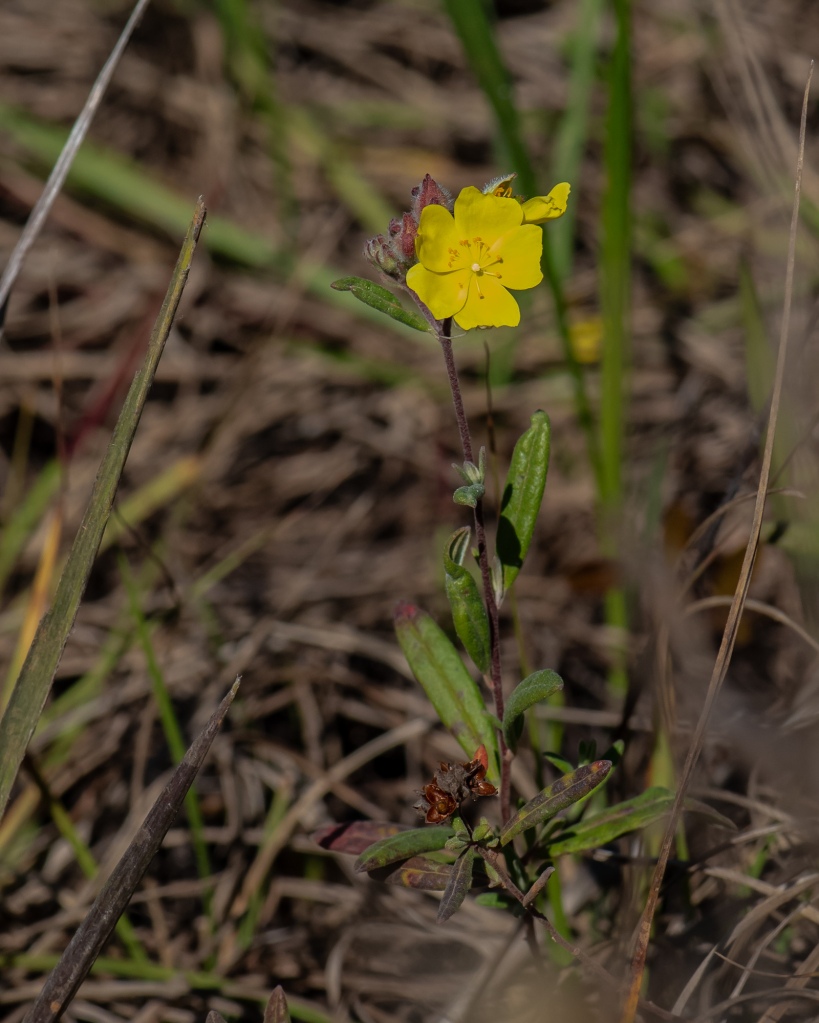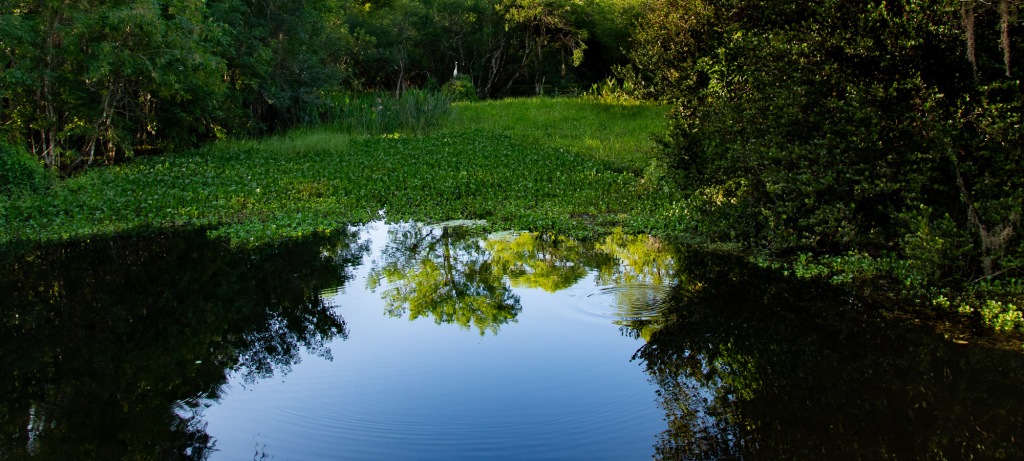
The sound of nature can be incredibly silent.
We scanned in all directions and saw no sign of human existence.
We strained to listen in all directions and heard no sound made by a human being. No traffic noise. No sirens. No electronic emissions disguised as “music”. No one yelling at someone.
The wet prairie of sawgrass, reeds, palm trees and cypress trees awakened gradually as the sun rose higher. Barred Owls called in the distance. A flock of White Ibises squawked as they flew from nightly roosts to a feeding area. Mourning Dove cooed, bright chirps from a Northern Cardinal, screeching of a Red-shouldered Hawk, raucous calls of American Crows – these are the sounds which soothe the soul.
Today, Gini and I continued to explore the Big Cypress National Preserve. Along U.S. Highway 41 (“Tamiami Trail”), the National Park Service operates two very nice visitors’ centers. Here, one can learn about the hydrology of south Florida and the importance of the swamps in filtering water as it flows to the sea. Additionally, there a few roadside parks along this highway which offer surprisingly good opportunities for observing the region’s flora and fauna.
We were up before the sun. We explored. We discovered. We relaxed. We got hungry.
Come on! Let’s go!
Just after sunrise, at the edge of a cypress-studded wet prairie, we found a blooming Moonflower (Ipomoea alba). Soon, it’s petals will fold as the sun becomes brighter.
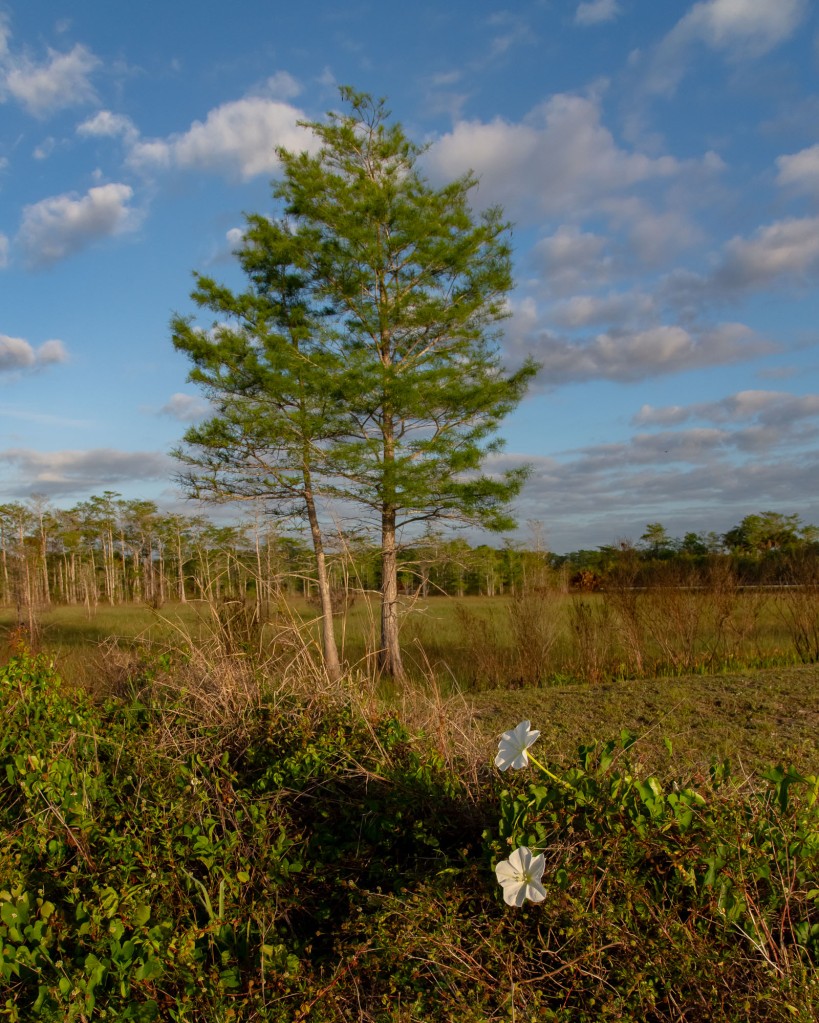
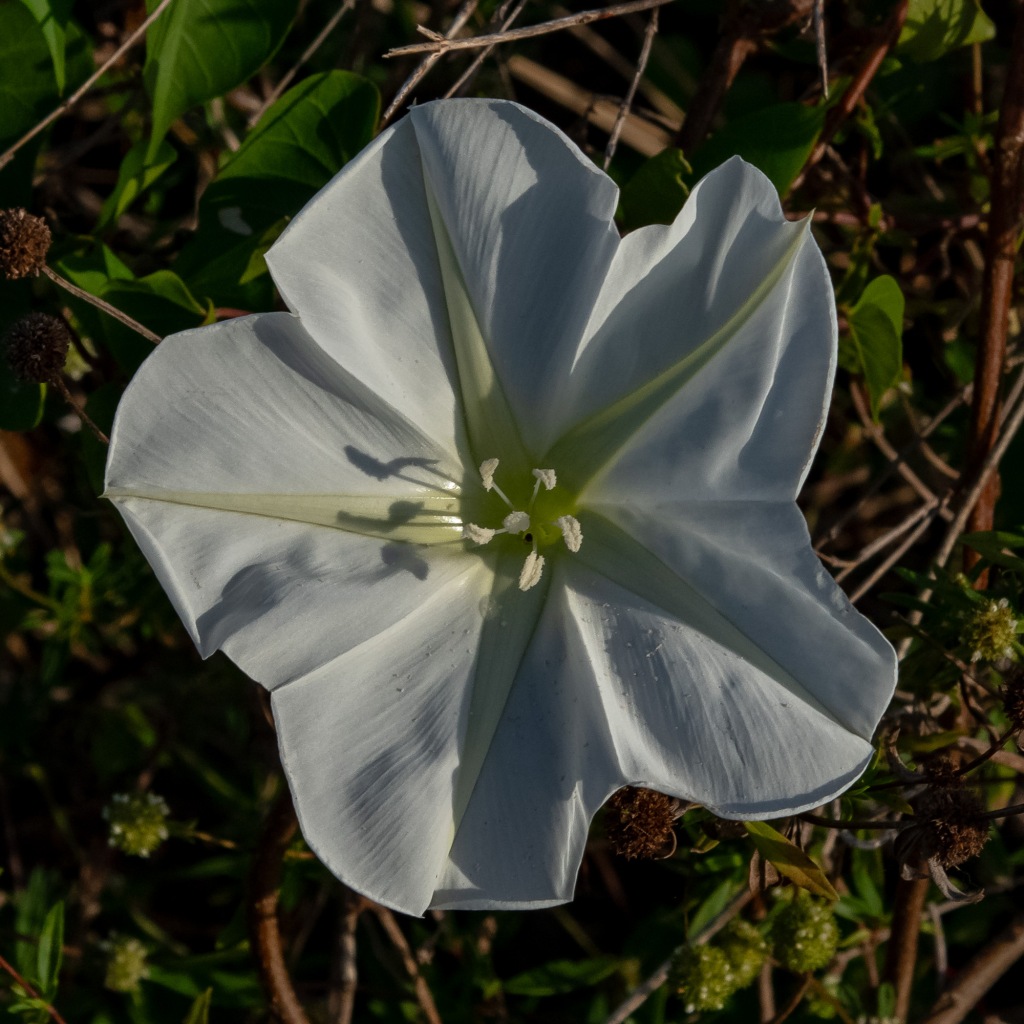
An American Crow welcomed us to our breakfast spot, the Kirby Storter Roadside Park. Mr. Storter helped oversee the construction of the “Tamiamai Trail” (U.S. Highway 41) many years ago.

As we enjoyed a boardwalk through the swamp, Gini found a crayfish claw, likely a remnant of a midnight snack from a night heron or other nocturnal prowler.
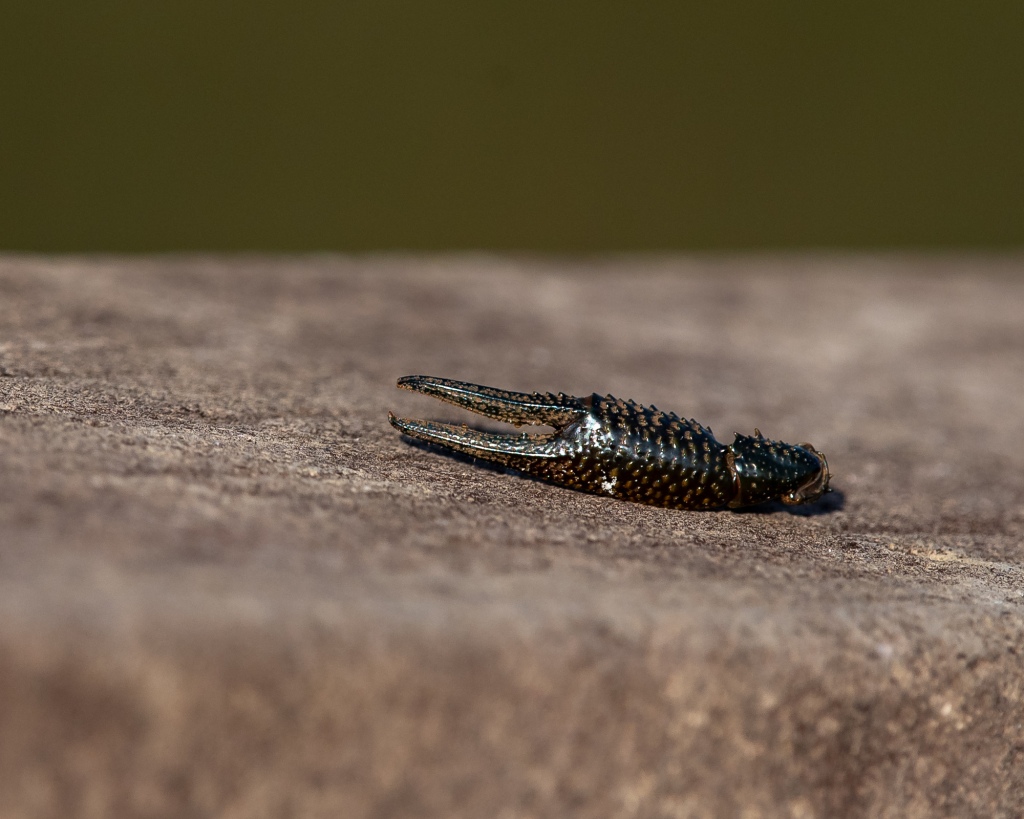
We promised more Cardinal Airplants (Tillandsia fasciculata).
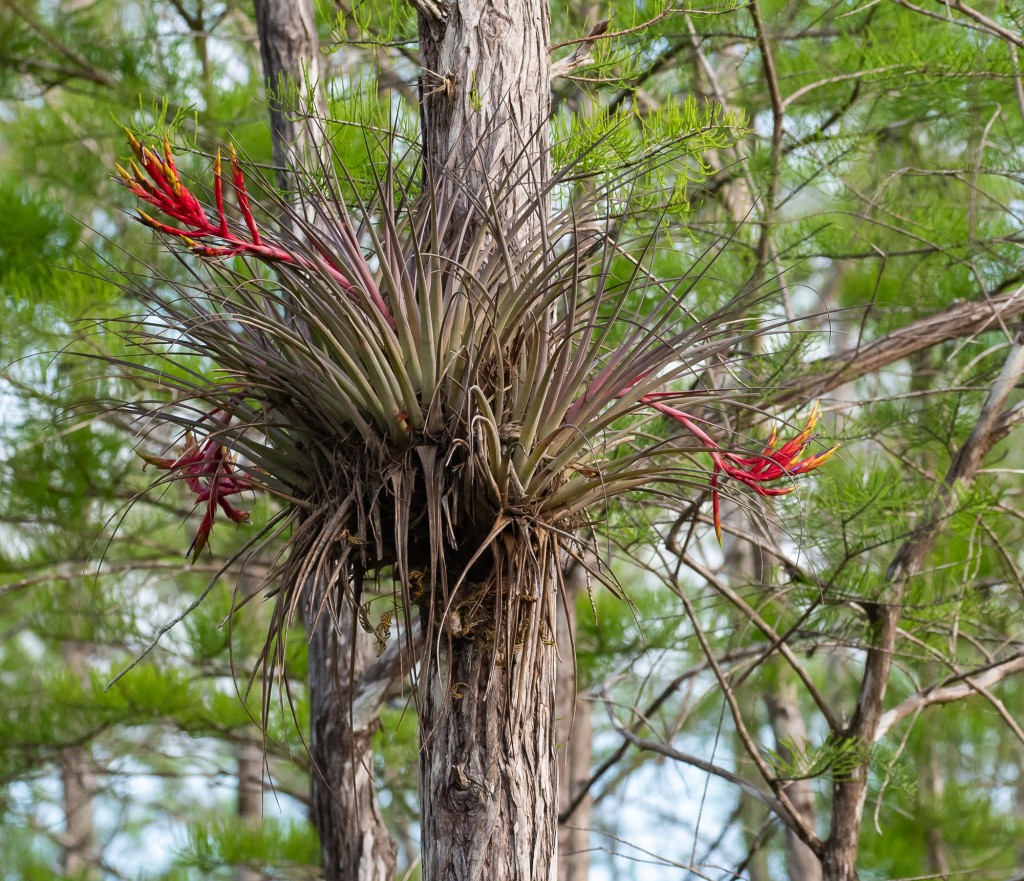
There are two species of Floating Heart (Nymphoides spp.) prevalent in this part of south Florida. One is native, the other invasive. I couldn’t tell which this one was. In the first image, enlarge and zoom in to see the very small white blooms decorating the heart-shaped leaves. The second picture provides a little better view of the flower.

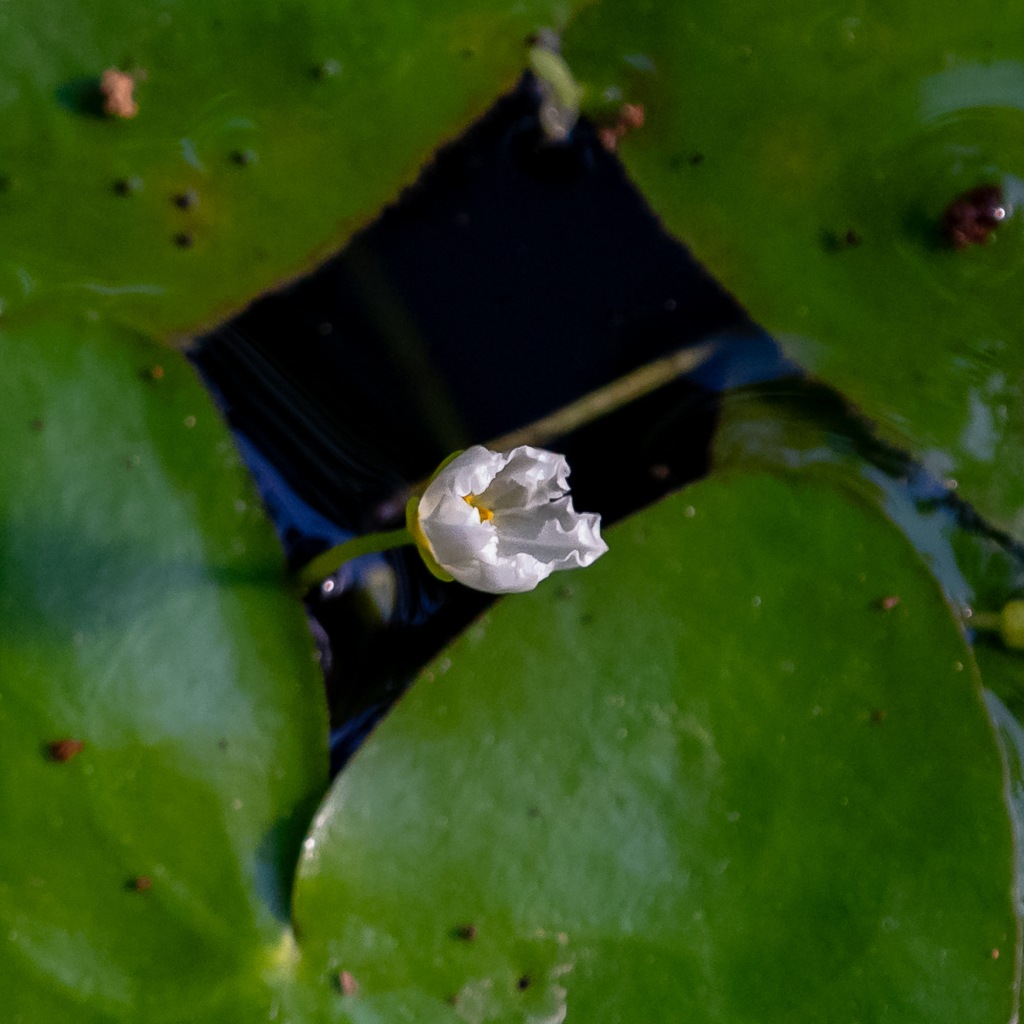
An immature White Ibis was not deterred by our presence as she probed the soft ground for breakfast. It takes about a year for these birds to achieve the completely white plumage of an adult.
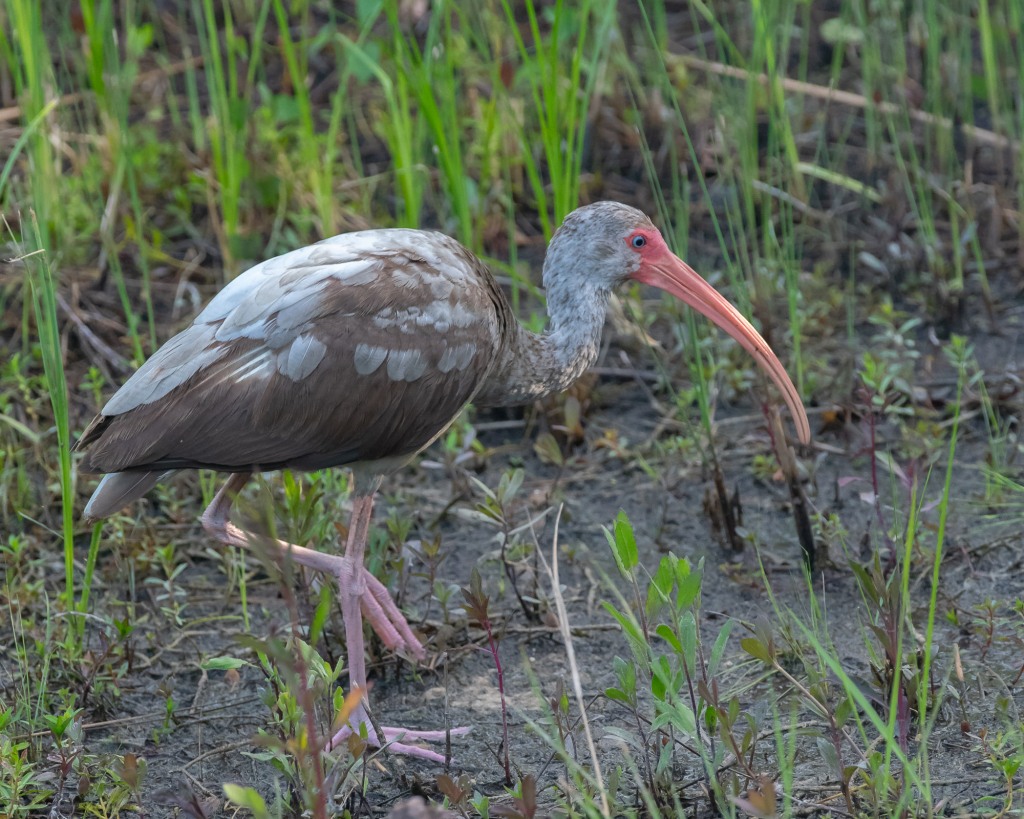
It may appear to be a flower, but the Starrush Whitetop (Rhynchospora colorata) is actually a perennial sedge. Unlike other sedges and grass-like plants, which are wind-pollinated, it’s pollinated primarily by insects.
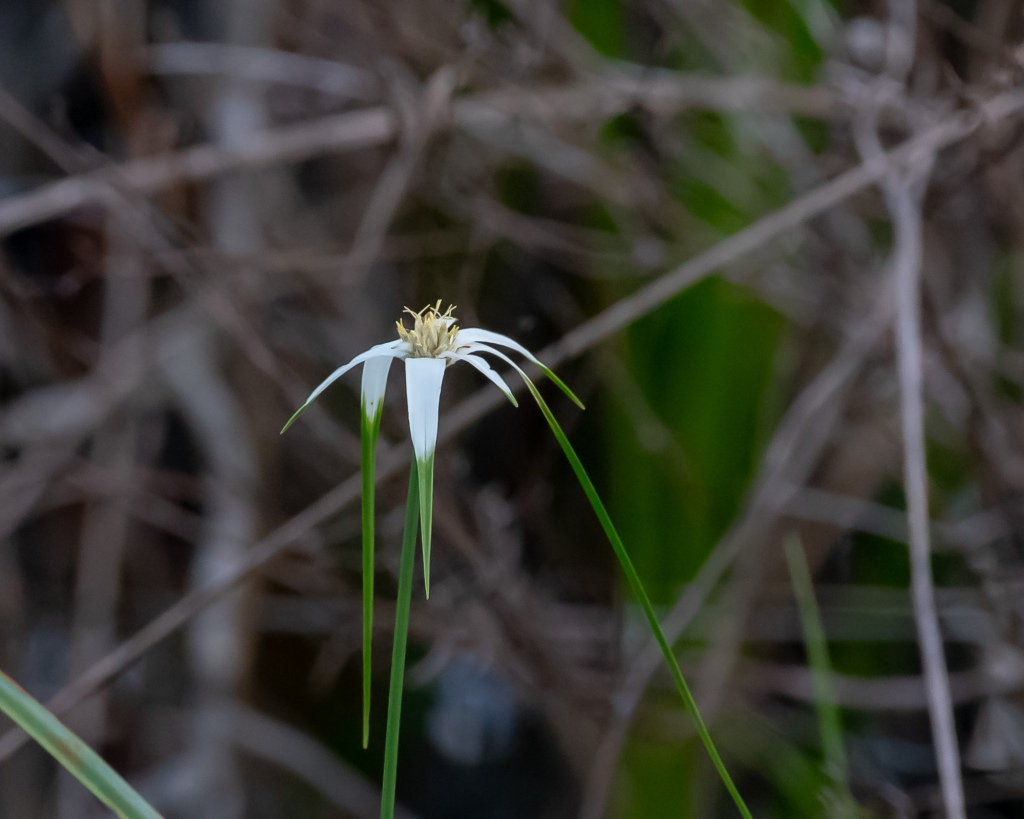
Spring begins early in the southern Florida swamps and there were plenty of insects enjoying the warmth, humidity and newly flowering plants. Gini’s sharp eyes spotted a Needham’s Skimmer (Libellula needhami).

Typically loud and challenging, a Common Grackle issued an unceasing “intruder alert” so the whole swamp knew we were there.
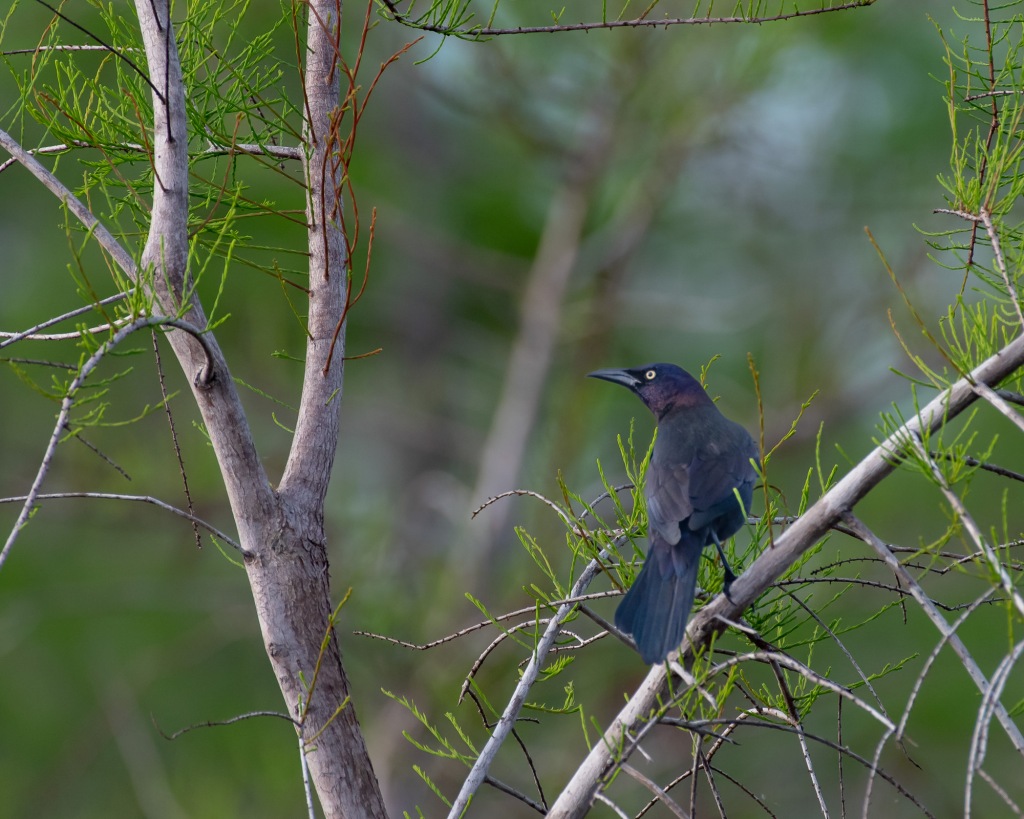
Another swampy resident of south Florida, the Pond Apple (Annona glabra) actually does form a small fruit resembling an apple. Reports of it being edible vary from “okay” to “use it in preserves” to “yukkk“.
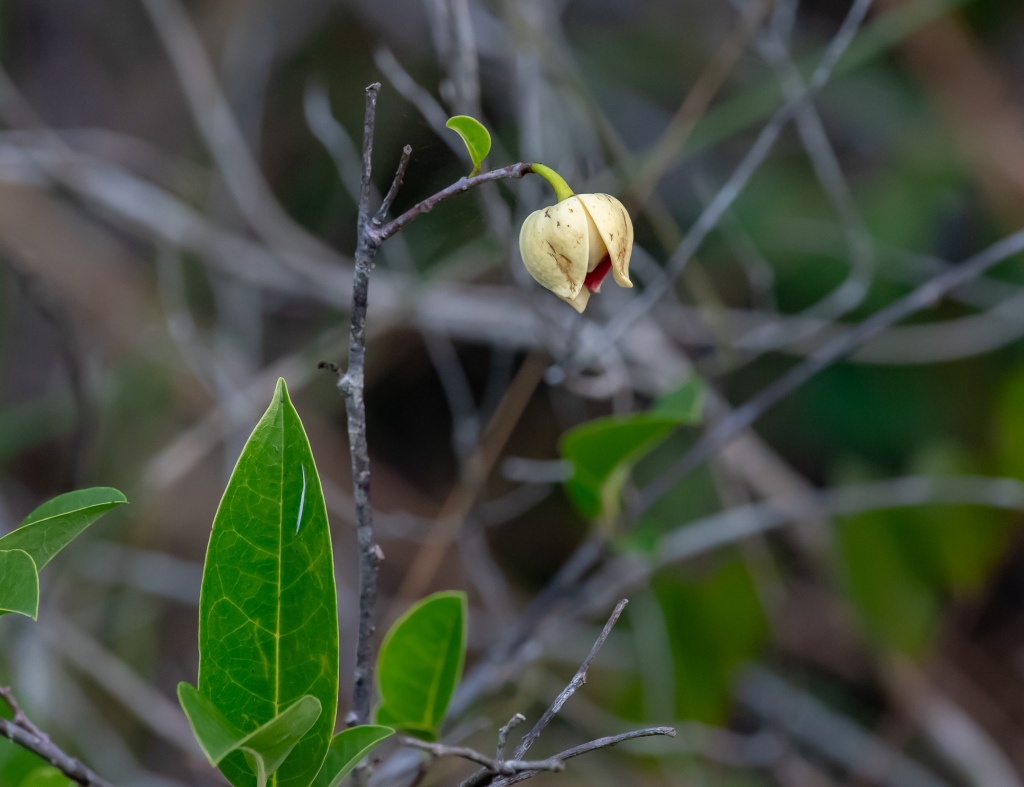
The large bright yellow grasshopper known as the Eastern Lubber Grasshopper (Romalea microptera) begins life as a small mostly black creature. Still pretty striking when on a nice green leaf. The immature ‘hoppers go through five molts (instars) each lasting about 20 days before becoming adults.
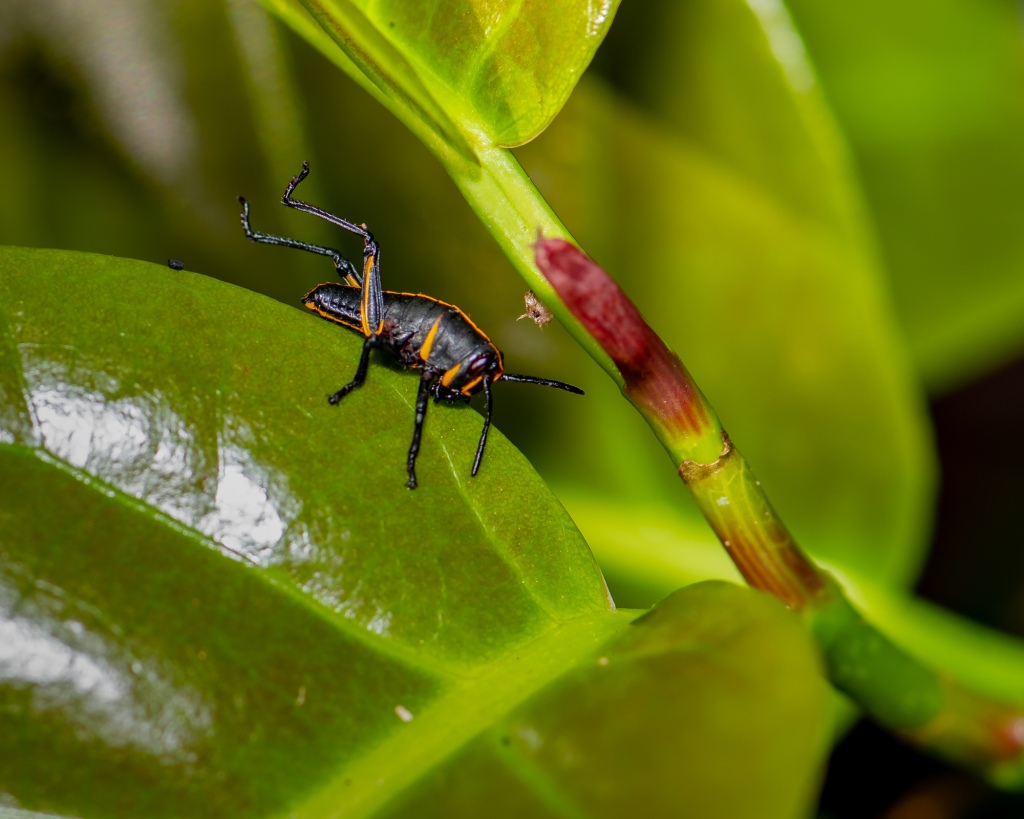
Bright red bird posed nicely. Northern Cardinal.
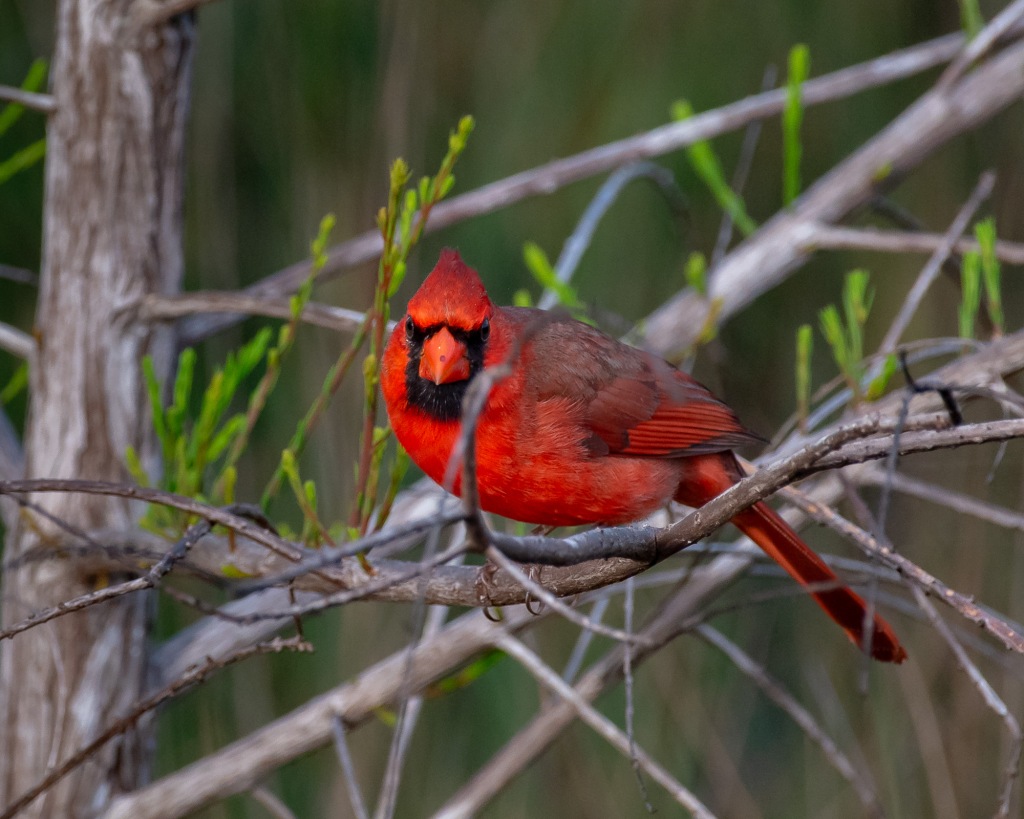
Bright red flower posed nicely. Cardinal Airplant (Tillandsia fasciculata). Again.

Another swamp dragon. A male Blue Dasher (Pachydiplax longipennis) has a bright white face, blue abdomen and cool black-and-yellow racing striped thorax.

Okay, adventurers. Tomorrow we will be heading northwest for a dose of salt water. So refuel and get a good night’s sleep. For us, a bowl of she-crab soup, a helping of fried green tomatoes and a platter of fresh shrimp. That hotel bed will feel mighty comfortable. Sweet dreams!

The Big Cypress Preserve offered up some amazing scenery, flora and fauna. We found familiar things in a different setting, discovered new plants, enjoyed incredibly dark night skies packed with stars, basked in the warm Florida sun and can’t wait to do it again!
Enjoy your search for a natural place and come back for a visit!
Additional Information
Big Cypress NP (https://www.nps.gov/bicy/planyourvisit/things2do.htm)
Big Cypress NP Visitor Centers (https://www.nps.gov/bicy/planyourvisit/visitorcenters.htm)
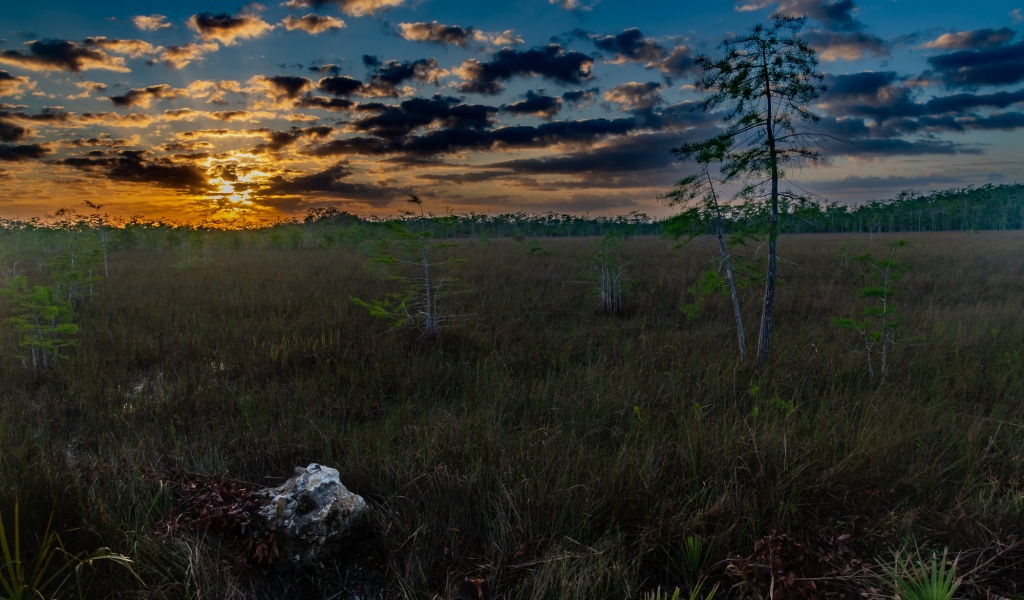
(Click image to enlarge, click again to zoom.)
We had not taken a road trip for quite awhile. March is the month in which we married, 56 years ago. Time to celebrate.
Several locations in southwest Florida have been on our “sure would like to go” list for several years. As we reviewed the map, two new spots and one long-time favorite were declared the winners.
The vehicle was serviced, hotel reservations booked, food sources scouted, bird reports digested, photographer recommendations considered, weather reports ignored (hey, it’s Florida!). We’re off!
First up, Big Cypress National Preserve, a 729,000 acre swampy buffer zone helping protect the vast Everglades watershed immediately to the south. Most of this area is only accessible by boat and much of that only by airboat. A few park service roads and very nice visitors’ centers helped us enjoy a couple of days exploring cypress and sawgrass swamp habitat.
Grab some bug repellant, get your hat, check your camera batteries and let’s see what we can find.
As the morning sky began to lighten, the sun chased away bits of lingering clouds and we began to see open wet sawgrass prairie dotted with single cypress trees and where deeper water collected, cypress domes.
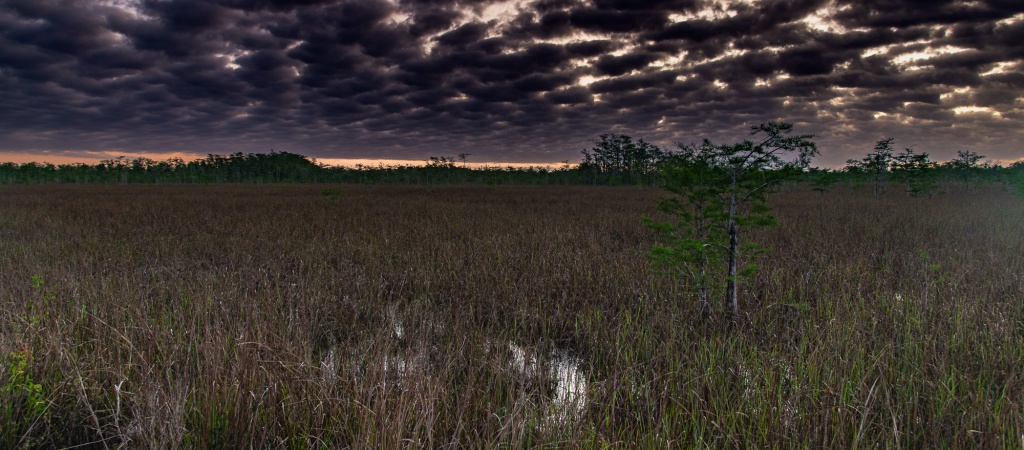
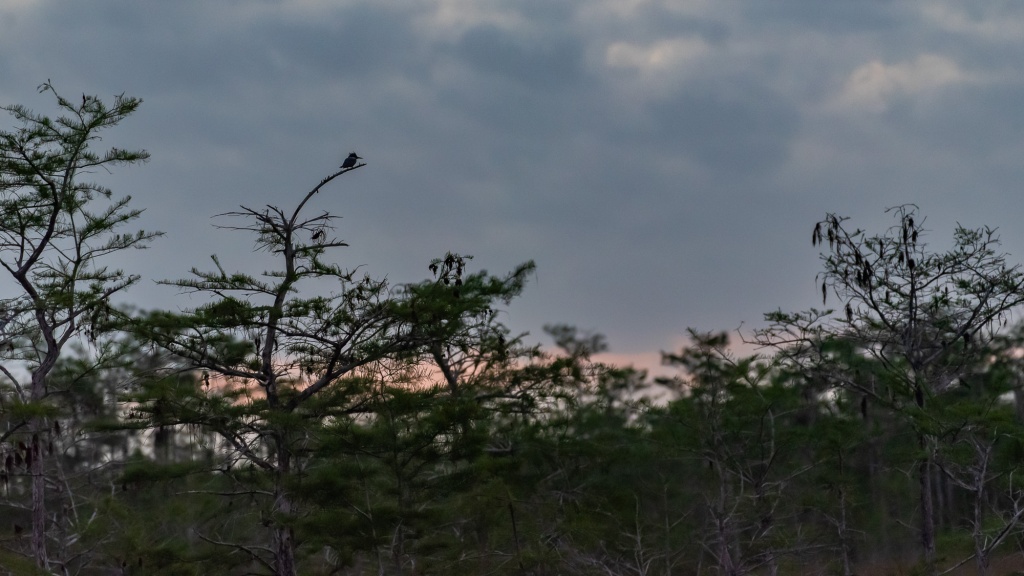


Once the sun was up, we had a better view of our surroundings.

Throughout the preserve are small areas of open water. If you’re a duck, you know where to find these waterfowl oases. These are all Blue-winged Teal.
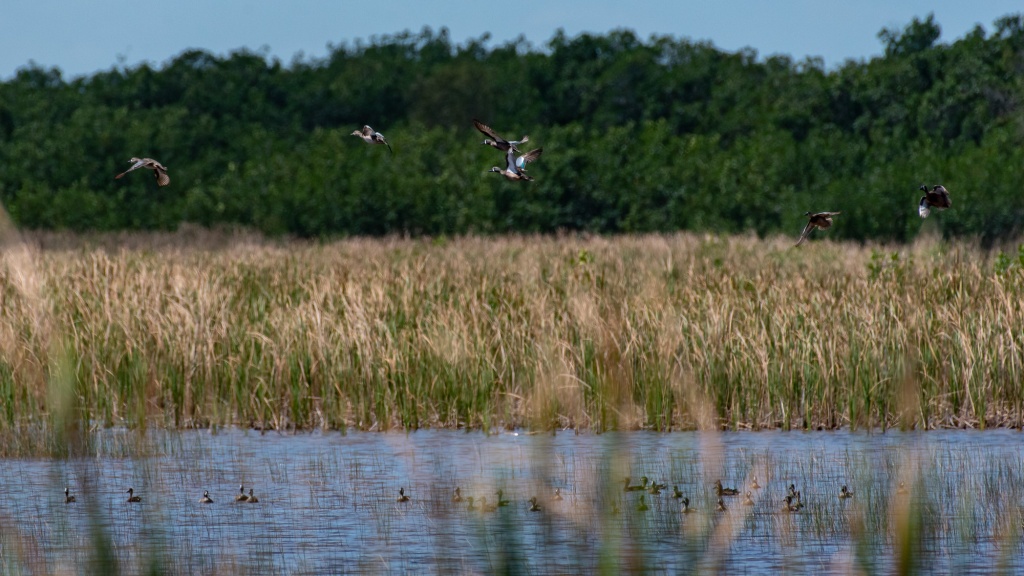
Sub-tropical conditions for much of the year provide ideal habitat for all sorts of humidity and heat loving plants. Cardinal Airplant (Tillandsia fasciculata) seemed to be blooming at every place we visited in the preserve.
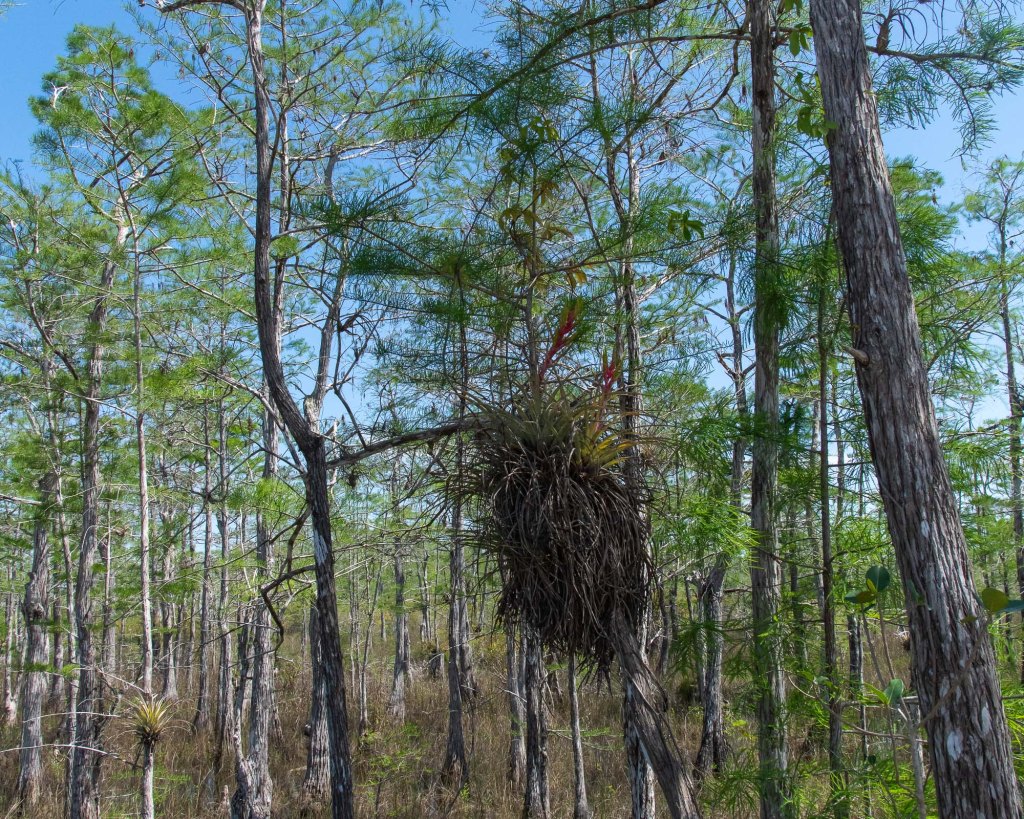
Leafy Bladderwort (Utricularia foliosa) looked as if someone had scattered very small yellow stars throughout the swamp. The fern-like submerged leaves trap all sorts of yummy things to help these small carnivorous plants thrive. Including mosquitoes! (I may have a new favorite plant.)
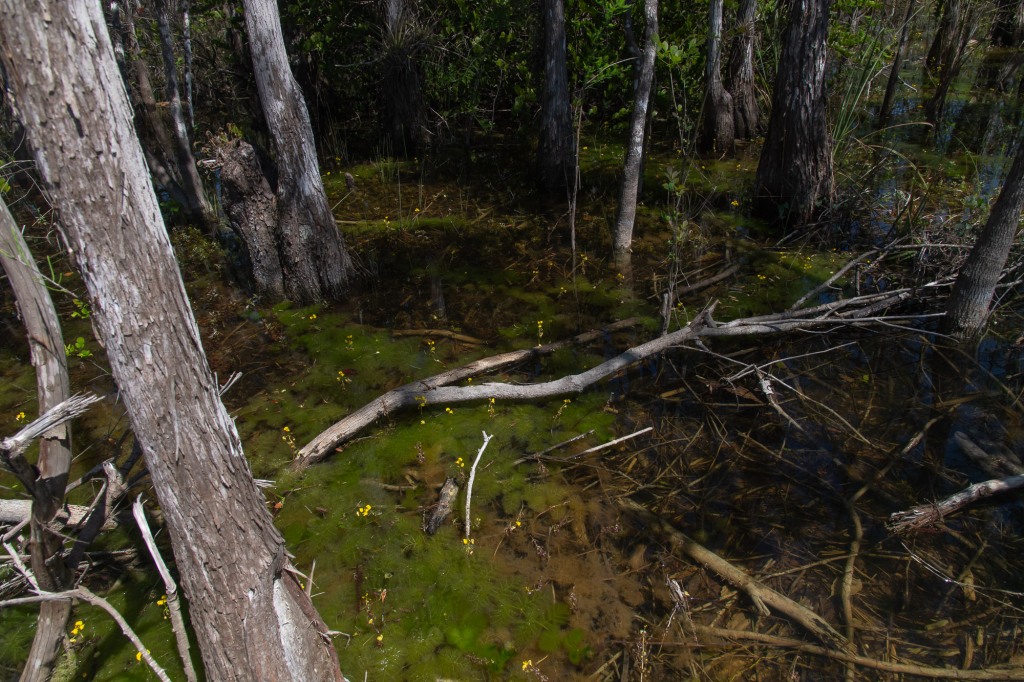

Even a large white bird such as this Great Egret can almost vanish in the vast swamp of sawgrass and reeds.
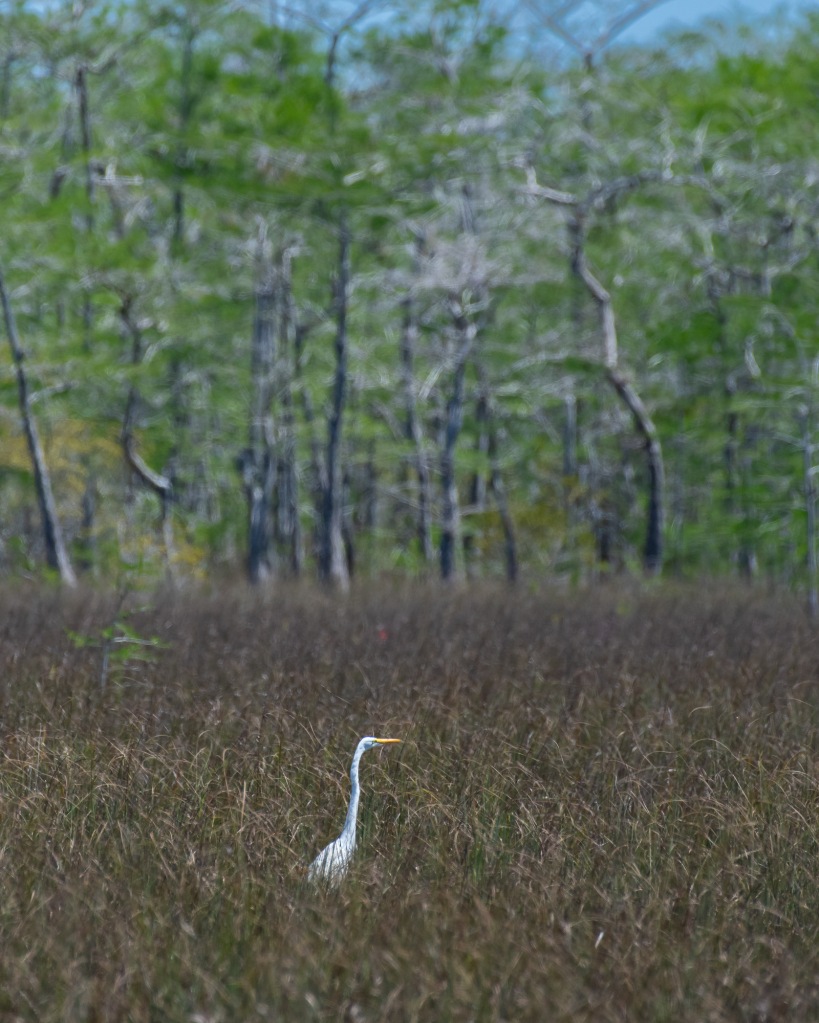
We found many familiar faces as we explored new territory. A bright Saltmarsh Morning-glory (Ipomoea sagittata) was a very welcome sight.
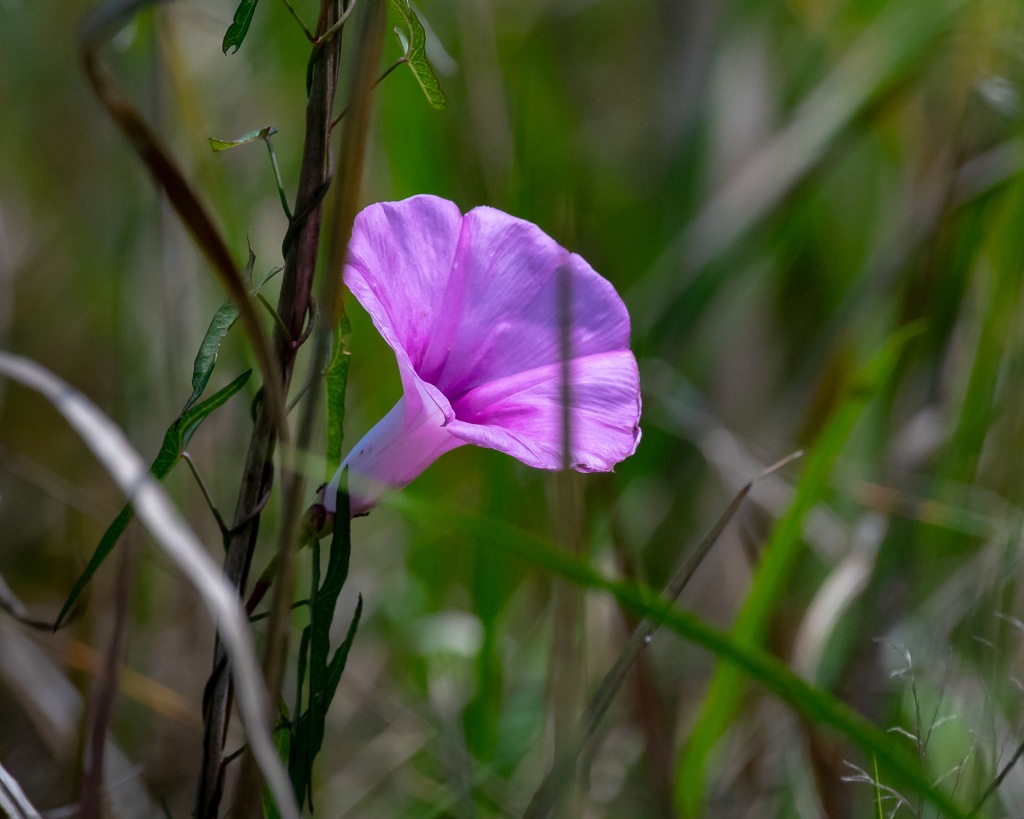
Timing was apparently good for a new crop of Halloween Pennant (Celithemis eponina) dragonflies. They were flitting nearby at almost every location.
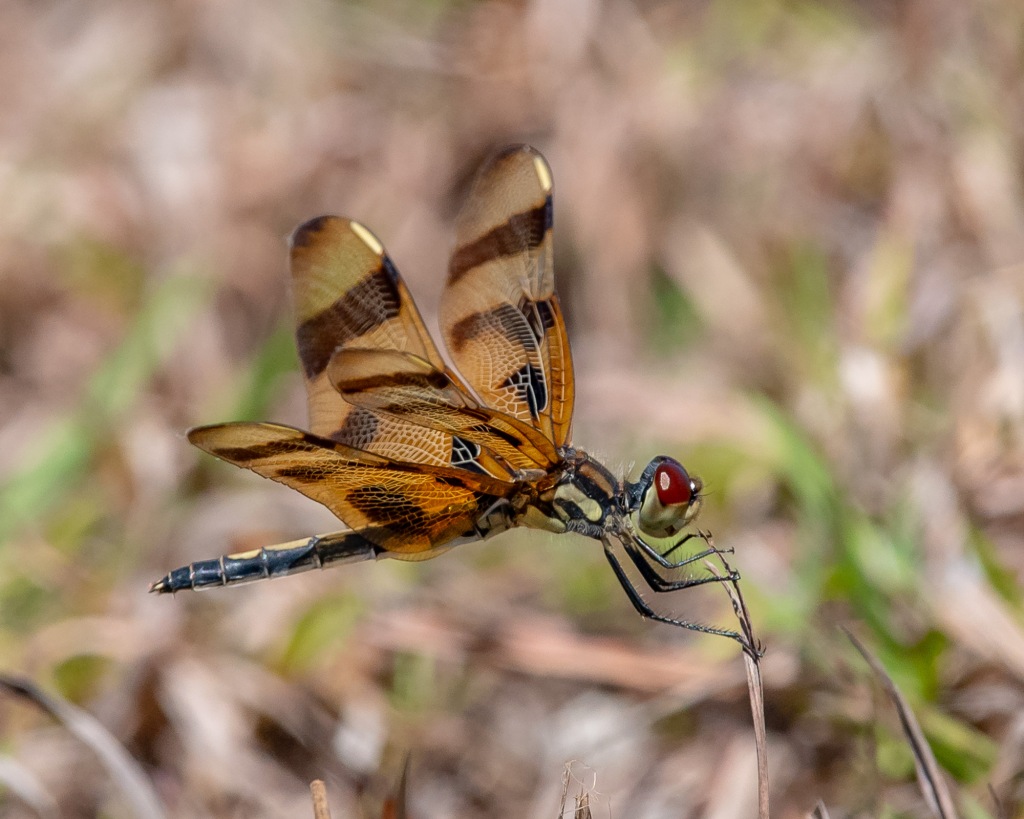
Rain in early March resulted in several flowing streams within the preserve. Clear water moving quickly over a rock bed carries nutrients to waiting flora and fauna in the sawgrass prairie.
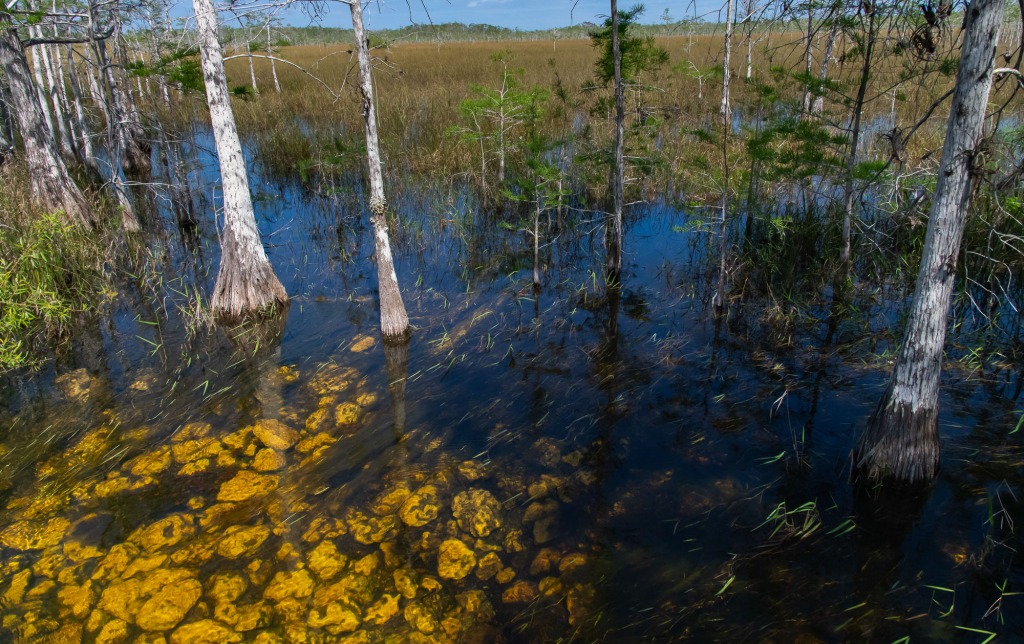
If the cypress and palm trees were happy with that wet enviroment, the Cardinal Airplant (Tillandsia fasciculata) must have been ecstatic. Red blooms filled our day.

Breakfast in the swamp is made better when friends drop by to visit. This little Palm Warbler said in a few weeks he would be feathering his nest near the Great Lakes.

Yes. We saw alligators. Like this one.
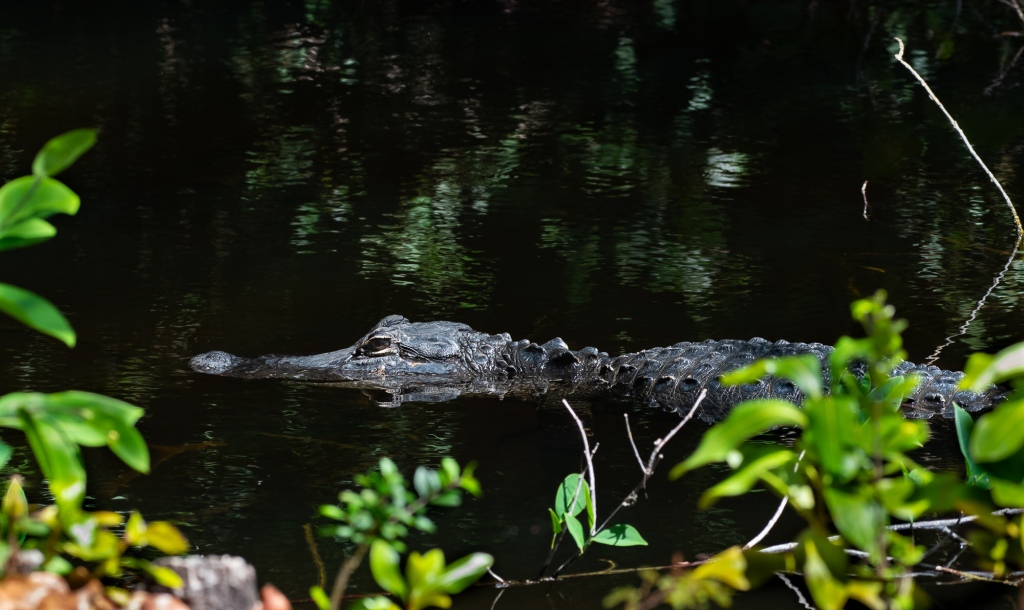
Just in case we needed a reminder, a large Palamedes Swallowtail (Papilio palamedes) butterfly emphasized it is Spring.

Underscoring the Spring attitude of the swamp dwellers, a female Northern Flicker surveyed the scene from her high-rise condo where there may soon (or already) be new eggs to incubate.

You look like you could use a break. Rest here awhile and we’ll find a gas station so we can continue to explore. Perhaps we’ll bring you some orange juice. And Key Lime Pie. Don’t go away.
Enjoy your search for a natural place and come back for a visit!
Additional Information
Big Cypress Preserve: https://www.nps.gov/bicy/index.htm

(Click on images to enlarge, click again to zoom.)
Spring. According to the calendar, it will be here next week, arriving precisely at 11:06 p.m. on March 19, 2024.
Nature. It adheres to it’s very own schedule, every day of the year.
I reckon it may be useful (?) to know that on the date and time above there will be an equal amount of day and night. Equinox. Plan accordingly.
So, there we were, six weeks ago, in the dead of Winter, leaving the house in the dark about an hour before sunrise. Dressed appropriately for Florida’s severe cold season (me, short sleeves and Gini with that sweatshirt just in case) we were prepared to explore what the swamp had to offer us this day.
The swamp. Yes, once again we are headed into Florida’s Green Swamp. To refresh your memory, this expanse in the west-central part of the peninsula consists of over 560,000 acres (875 square miles). The composition of the area is mostly hardwood swamp, cypress domes, sandhills and pine flatwoods. The Green Swamp is the source of four of Florida’s major rivers and below the surface is the vast limestone aquifer which contains most of the state’s drinking water.
The logging industry harvested pine and cypress here from the late 19th until the mid-20th century. Since then, better forest management practices have seen a significant return of mature trees of all species. Part of that resource management includes prescribed burns which attempt to emulate natural fires begun by lightning. Over time, flora and fauna adapted to natural fires and some species depend on periodic fires in order to thrive.
Old logging roads zig-zag throughout the swamp, some more passable than others. Many trails have been blazed along these roads, again, some more accessible than others. The good news is that we seldom see other humans during our exploration. We do see plenty of birds, blooms and bugs.
Six weeks ago, we really did not have Spring on our minds. Birds singing made us realize THEY had Spring on THEIR minds! Little Brown-headed Nuthatches are among the first birds to breed in our area and their high-pitched “rubber-ducky” squeaking filled the air. Adding to the Spring mix were the cheerful “chicka-dee-dee-dee” calls of Carolina Chickadees. Red maple trees were beginning to bud. Yellow blooms dotted the wet places and sides of the road. The sun was warm. The sky was blue.
The Green Swamp was beginning to show its true colors.
Recent rains have made walking through a pine savanna a rather damp experience.
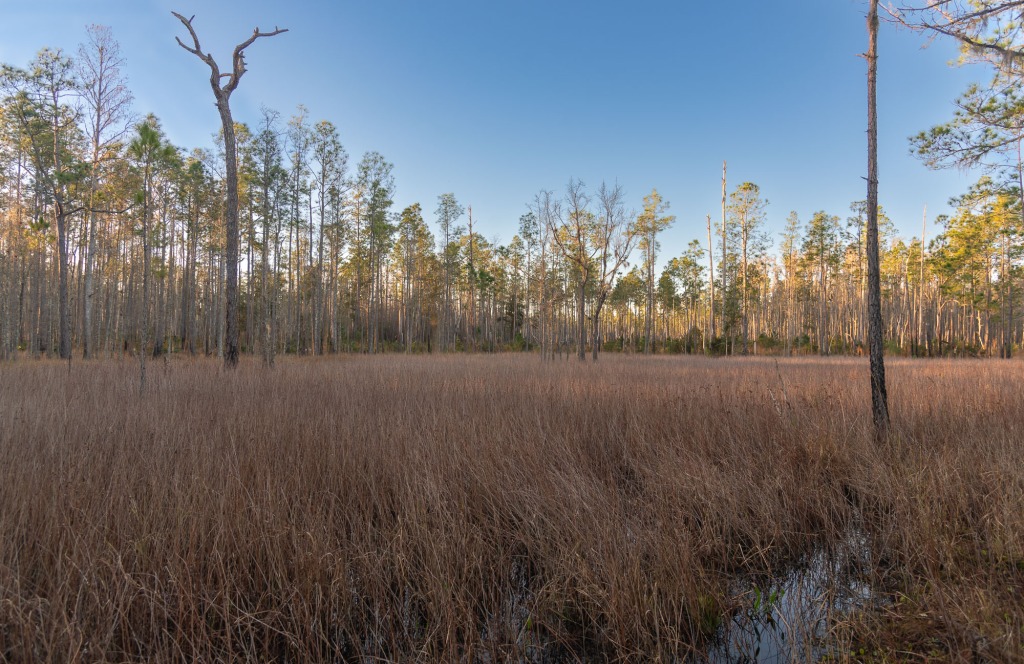
A male Northern Cardinal added some bright color to the swamp. We heard many of them singing all morning.
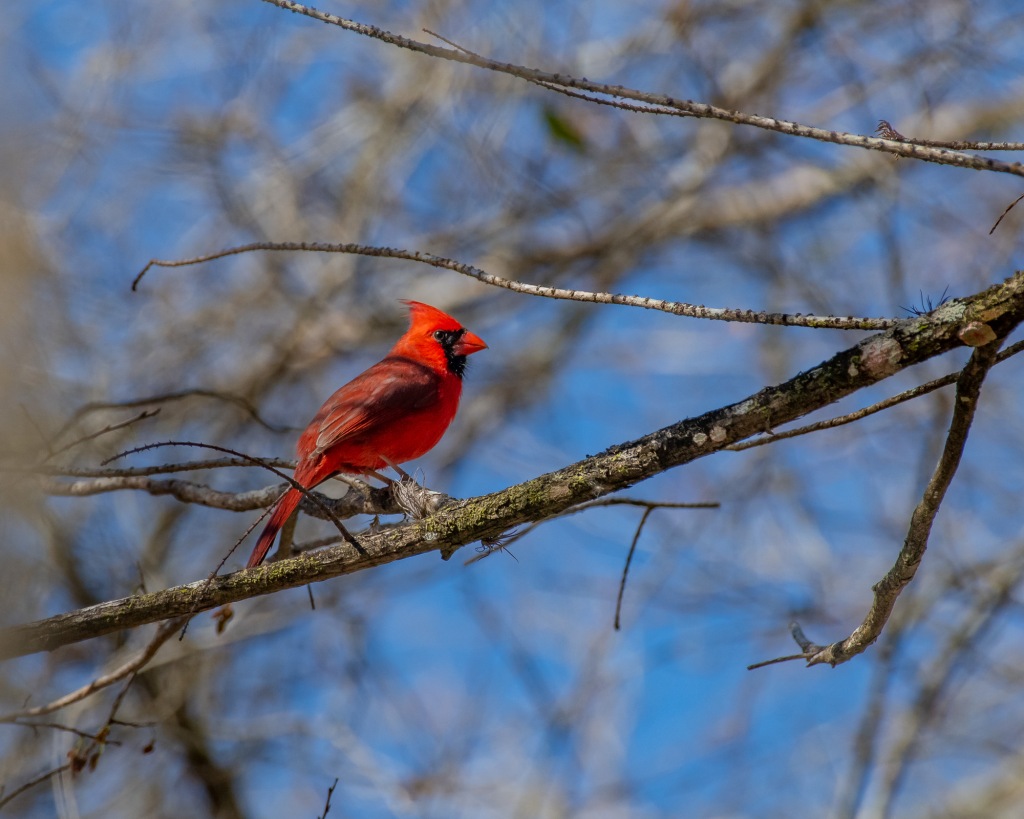
One of the better-looking logging roads as we head into the sun.
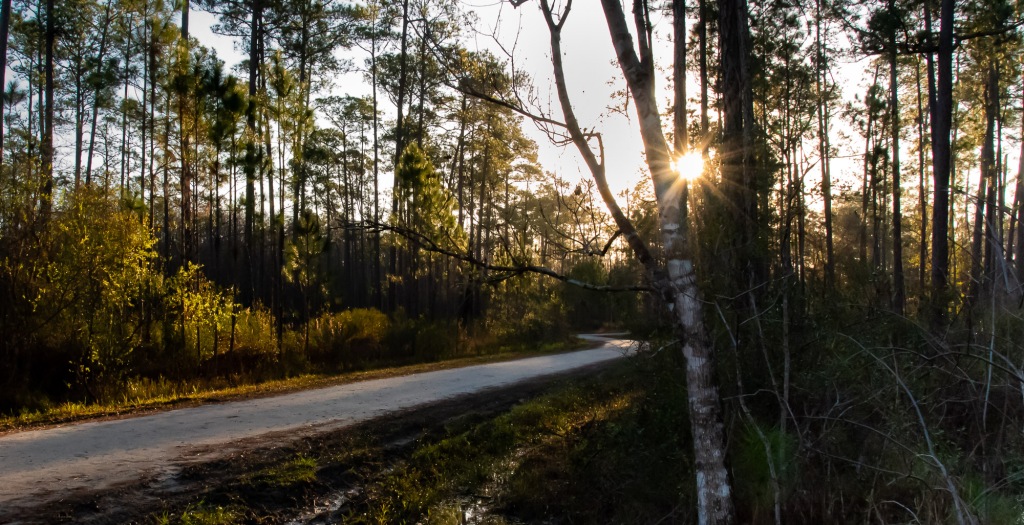
The Blue-headed Vireo is a winter visitor and will head north to breed by the end of March.

One might expect to find a lot of fungi in such a wet environment. One would be correct. This one is a large shelf fungus known as Turkey-Tail (Trametes versicolor).

Throughout the fall and winter months, some wet places have an abundance of bright yellow flowers known as Smallfruit Beggarticks (Bidens mitis).

Small. Squeaky. Feisty. In Florida, the Brown-headed Nuthatch begins breeding as early as the second week of February. Hey! That’s now!
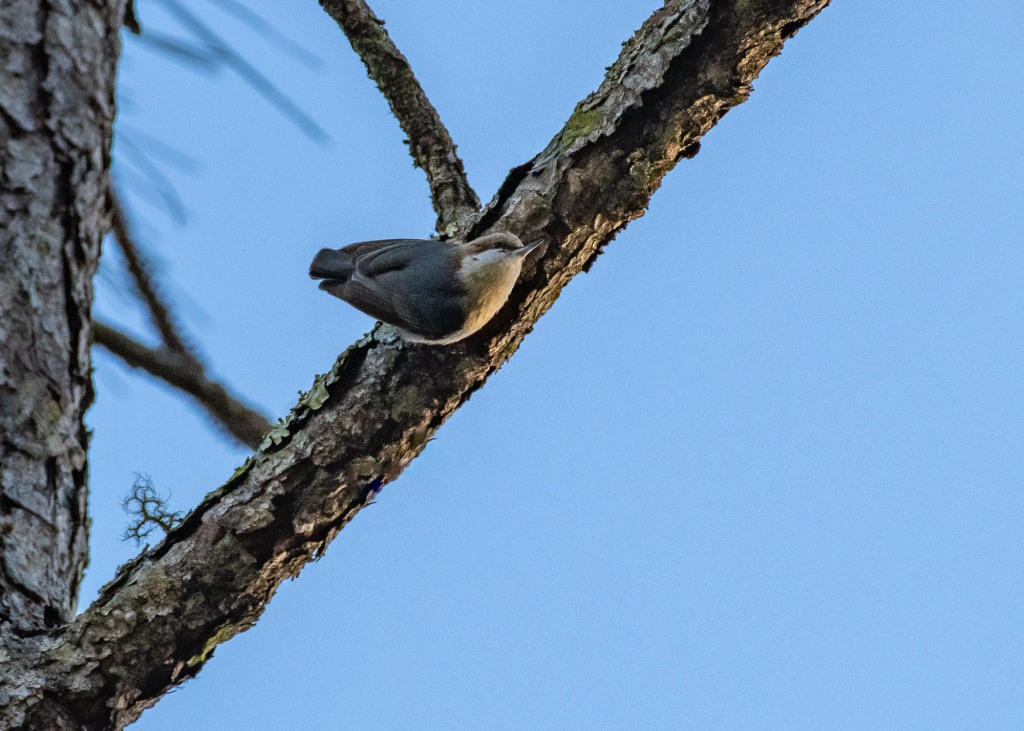
A fascinating family of plants, bladderworts are carnivorous and attractive. Interesting combination. We are just beginning to see one of their local representatives, the Floating Bladderwort (Utricularia inflata), appear on the surface of many pools in the swamp.
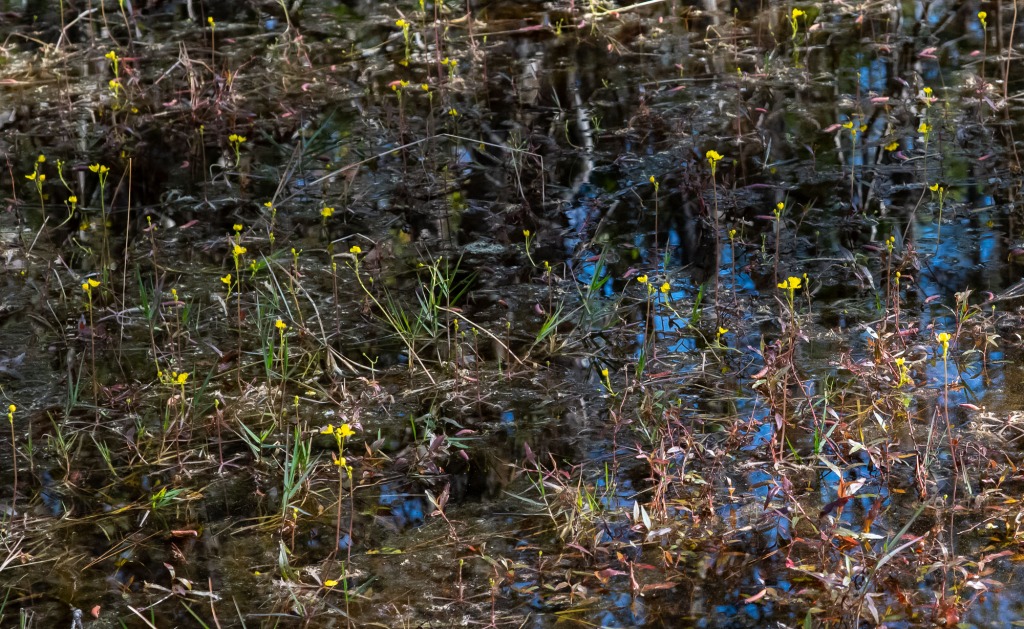

Small, plain, quick. The Blue-gray Gnatcatcher may not sport bright colors, but they sure are fun to watch as they vacuum up bugs from every branch and leaf. This species breeds here but there are also many migrants out and about.
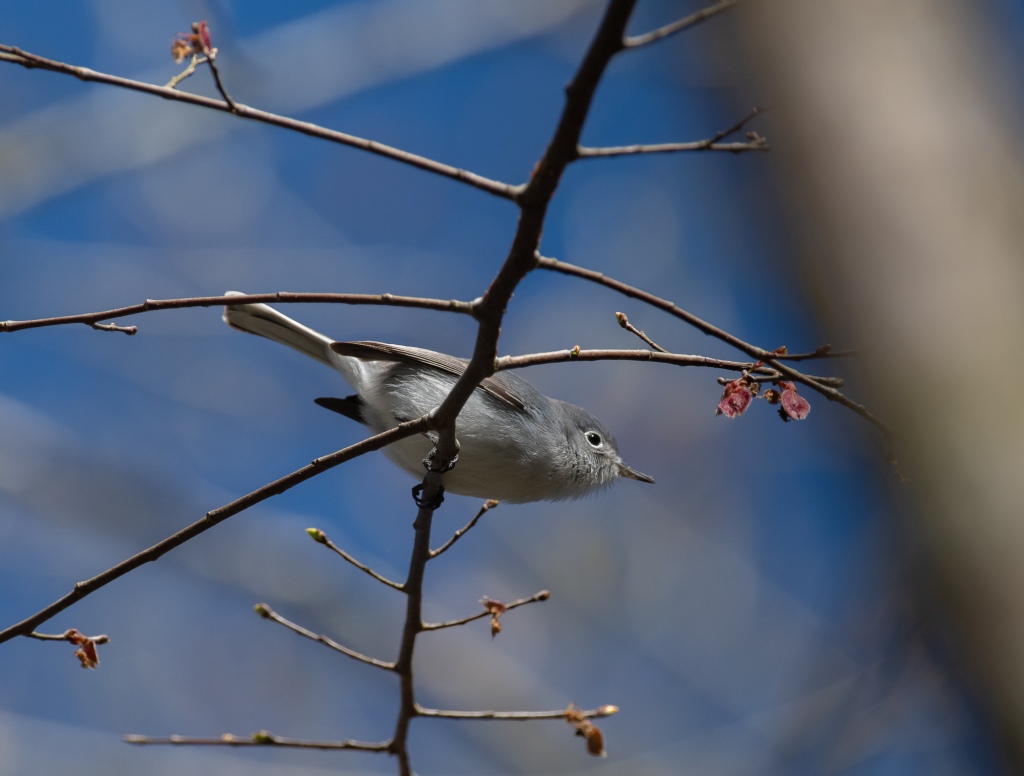
A couple of areas go through oak hammocks and almost form a “canopy road”.
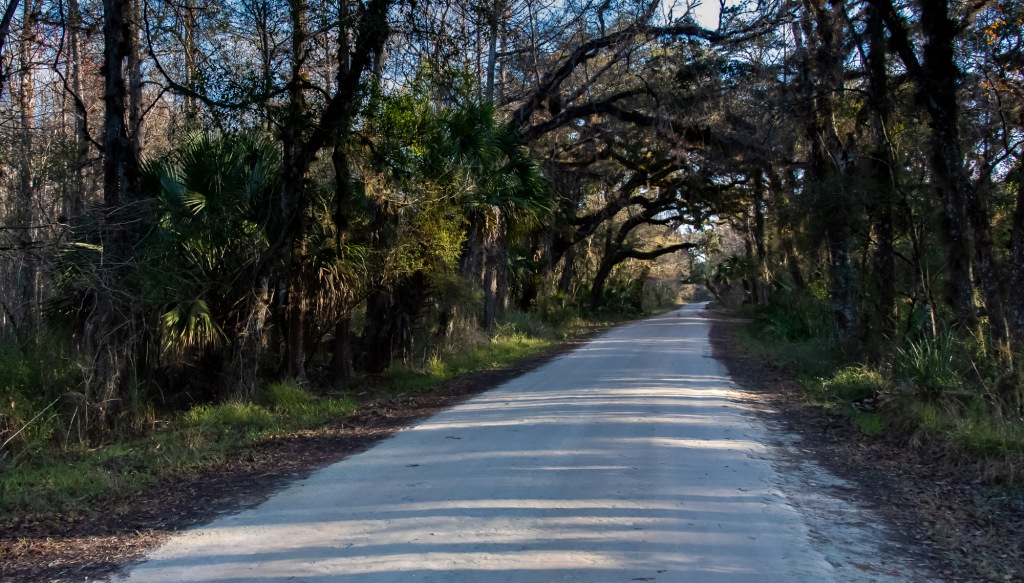
Bits of red atop tall trees signal our Red Maple (Acer rubrum) trees are about to burst into bloom.

Another of our migratory visitors, the Yellow-rumped Warbler, arrives and leaves later than most other species. That’s okay with us. We think they’re adorable.
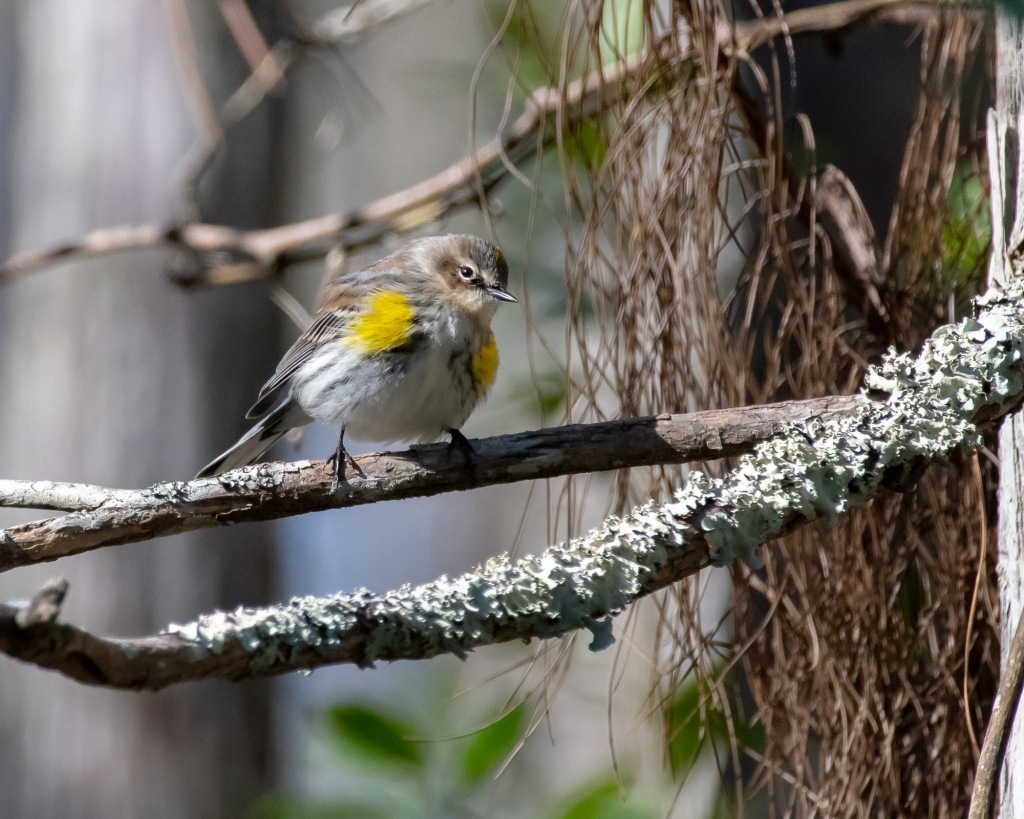
Some of the roadside ditches had several patches of bright yellow Blackeyed Susan (Rudbeckia hirta) this morning.

It seemed as if every time we stopped, we heard the calls of the Carolina Chickadee. The calendar may say one thing. These little birds sing a different tune.
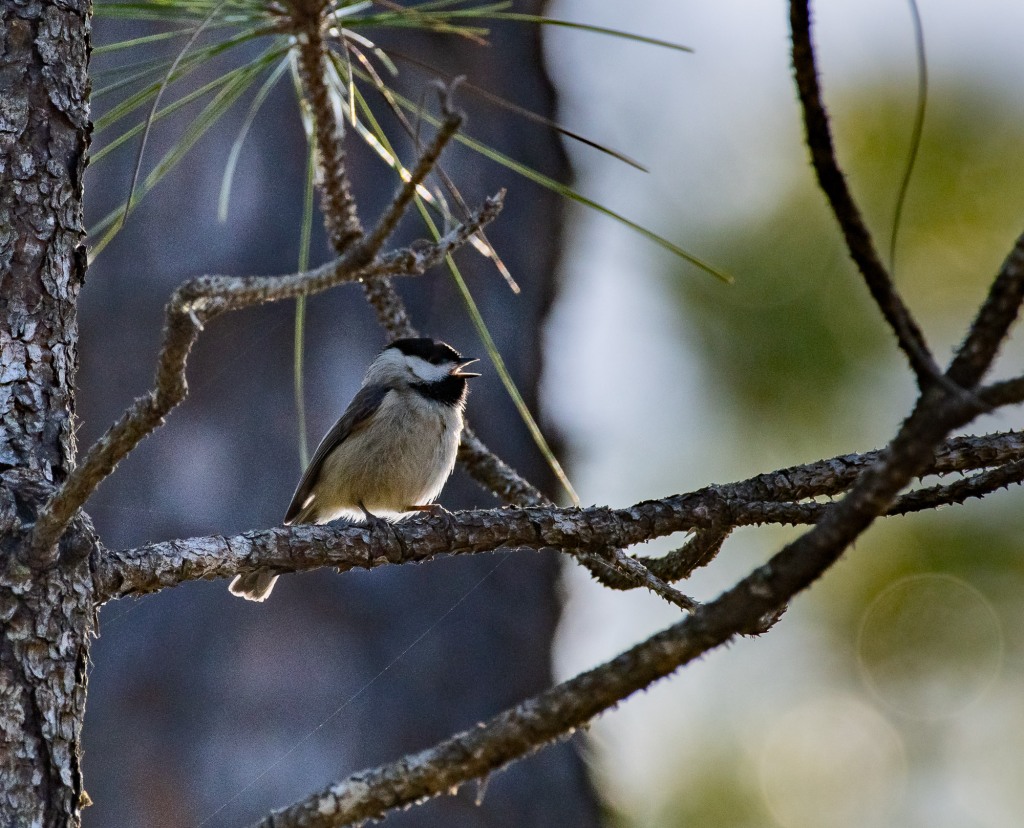
Our winter day in the Green Swamp turned out to be composed of many different colors. We hope your winter has not been too severe. No matter what the calendar says, Nature may let you know it’s okay to celebrate Spring whenever you’re ready.
Enjoy your search for a natural place and come back for a visit!

(Click images to enlarge, click again to zoom.)
Good news and bad news.
The good news: Our central Florida winter has not had any days below freezing. That means we have been pretty comfortable as we explore.
The bad news: Our central Florida winter has not had any days below freezing. That means mosquito larvae have not suffered much degradation and there will soon be many hungry adults looking for a feast. Additionally, our local strawberry crops produce sweeter fruit when we have a couple of cold weather events, as the berries remain on the plants longer allowing more sugar to develop.
Our goal is clear. Enjoy being outside more since it’s so warm and cozy. Stock up on skeeter spray and sugar.
Check.
One of our recent warm-ish (Gini needed a sweatshirt) and cozy outings took us through some local territory where it became increasingly obvious that Nature abhors a calendar. Or at least ignores them. Spring is “officially” (so, there!) not arriving until the third week of March. Imagine our surprise <(this is known as “sarcasm”) when we encountered birds engaging in “Spring” migration, flowers blooming and – gasp – actual nest building taking place! Our minds were boggled.
Well, perhaps not completely boggled. We are, after all, spoiled native Floridians and if the winter had produced two days in a row below 40 you would have been able to hear us whining about it all the way to Timbuktu, which, I think, is a very long way from here. We bravely take these abhorrent non-freezing, snow- and ice-free days in our flip-flop stride. (Except for Gini. Below 50 and out comes that sweatshirt. I try not to roll my eyes.)
Turn up your heater, pretend you’re with us in the sub-tropics and enjoy the day!
Double-crested Cormorants roost in nearby wetlands and at dawn begin spreading out across the lake-studded landscape to find a good fishing area.

You know the feeling. Someone is looking at you. You turn this way and that and, there – a pair of dark eyes examining you to see if they should run or hold still. I slowly backed away and took a quick pic of the young Opossum.

Escargot for breakfast. Beats me how Limpkins can enjoy the things with no lemon and garlic butter.

Most of the Climbing Aster (Symphyotrichum carolinianum) has bloomed and gone to seed. Except one lovely lavender holdout who remained for us to enjoy this morning.

Osprey nests throughout our area are being built, re-built and spiffed up. Soon, there will be new mouths waiting for fresh fish to be delivered.


Is it a new bloom or has it been here all winter? We are just thankful this Indian Blanket (Gaillardia pulchella) is here at all.

One of our winter visitors, an Eastern Phoebe, is happy for the warm weather since it means more insects will be out and about. She would like to invite a few for breakfast.

It takes awhile after sunrise for the cypress swamp to allow some light to penetrate.

During fall and through much of the winter, Burrmarigold (Bidens laevis) blooms in masses along the edges of wetlands, creeks and lakes.

Blue-gray Gnatcatchers are beginning to form groups as they hope there will be safety in numbers during their upcoming long migration flight northward. Many of these small, quick-moving bug catchers will remain with us all year. Hopefully, they will feast on mosquitoes. Lots of them.

It has pretty, feather-like leaves along its twining branches. It has pretty pale pink flowers. It has pretty bright red seeds encased in its rough brown pod. It is an invasive plant from Asia which can choke the life out of native plants. Rosary Pea (Abrus precatorius).
Oh. And it’s poisonous. Don’t eat the pretty seeds. Wash up if you handle it.

Another one of our handsome seasonal visitors. The Yellow-rumped Warbler arrives a bit later in the Fall than some other songbirds and hangs around a bit longer in the Spring. This one is preening which is important for good health and — What? — Me? — Taking a picture of you bathing? — Well, yes, I guess I was. — Sorry about that.


A small cypress tree bayou leads from a lake into an adjacent wetlands.

An immature Bald Eagle flew low overhead. Time for us to fly toward home.

We hope Spring arrives ahead of schedule wherever you may be. For those south of the equator, we hope Autumn will be kind and deliver just enough rain without overdoing it. Whatever your season may bring, embrace Nature and live your best life.
Enjoy your search for a natural place and come back for a visit!

